Last week was the famous Ratha Yatra chariot festival, which is held each year for Lord Jagannatha in Puri. At first the government had cancelled the religious festival, but as the deadline approached the Supreme Court relented and gave permission for the Puri temple to conduct the festival without the presence of the public. Likewise, Jagannatha temples throughout the state were informed to conduct all the rituals for the festival within their respective temple compounds in a scaled down manner, without the presence of the public.
Though our Jagannatha temple in Bhadrak, Odisha has been existing for 14 years, due to various reasons we had not been able to perform the chariot procession for the main deities in all these years. Primarily the difficulty was that our deities are very large, and are too heavy to lift and carry to a chariot. Secondly our ashram is located in a small town with tiny congested lanes that can’t handle a full sized chariot. Further, there are numerous low lying electric wires on every lane which make it impossible to drive a normal chariot down the roads. Due to all of these difficulties, from the opening of our temple we had not been able to pull the chariot of Lord Jagannatha, though we celebrated the day every year with festivities.
For many years we thought over what could be done, as the Ratha Yatra festival is the most important seva of Lord Jagannatha in all of His temples. In 2015, the year of the Navakalevara festival in Puri, when new deities of Lord Jagannatha are made, we decided we should make a small set of deities to use as the utsava murtis for conducting festivals of the main deities. When its not possible to worship the main deities in festivals, it is common to keep smaller deities known as utsava vigraha, that represent the main deity as his direct expansion for engaging in all sorts of festivals such as rathotsava (chariot festival), jhulan yatra (swing festival), the boat festival, etc.
With this in mind, we set out to create a special deity of Lord Jagannatha that we could use for conducting the Ratha Yatra chariot festival in a small manner that would be practical in our limited environment. The making of this special deity began in 2015 and was completed four years later in 2019, when we performed the pratishtha and held our first Ratha Yatra chariot procession. That was just last July. Briefly I want to describe how this came about.
In 2015, the Navakalevara festival of Lord Jagannatha was being held after a gap of 19 years. That is the festival where the deities of Lord Jagannatha in Puri are changed and given new bodies. In the process special trees are identified which are to be used for the construction of the new deities. Those special sacred trees which are identified through divine trance are known as Daru Brahma, or “the absolute truth in the form of wood”. For this reason in Orissa the Lord is known as Daru Brahma Jagannatha.
We had been given indication that this year was time for us to make the utsava deities, and after a long process the sacred neem wood was collected following the appropriate customs and rituals. There were several interesting miracles that happened related to getting the wood for making the deity, but I will have to tell those another time.
In total we collected six small logs of neem wood and kept them on our temple’s main altar, performing daily worship to the wood for 3 years, allowing the wood to dry properly before carving. People will not believe it, but after sometime, sandalwood scent began emanating from the wood, and the entire altar was having the smell of sandalwood. Every day our pujaris were coming to us and telling that they cannot explain how sandalwood smell is filling the altar and coming from the daru wood.
In 2018 when the wood had fully dried and the puja was complete it was time to start carving the deities. There was a small problem though. We needed the same carpenter who had carved our main deities to come and carve these smaller deities. The problem was that no one knew who that person was.
Our temple pratishtha had been in 2006, and now it was 2018 – 12 years had passed. No one remembered the name of the carpenter or even knew in which village he lived. We had originally met him in Puri, but he was not from Puri, and he had later moved back to his native village.
At this point we were confused as to how to move forward. We knew he was the one who was supposed to carve the deities, but we had no idea what his name was or where he lived. I told to our pujari, “Now is the time for carving the deities, and the sacred wood is ready. We need to somehow find out who the original carpenter was.”
This is when another one of the many small miracles happened. The next day our pujari went to the local provision store, where he bought groceries every day. When he went in, the owner of the shop called out to him without any warning, “You know your Jagannatha deities? My childhood friend from Jajpur carved those deities.”
Our Pujari was shocked. I had just told him the day before that we needed to some how locate this person, and now out of nowhere, in this shop where he had been coming every day, the owner is announcing to him that his friend had carved our temple deities. In twelve years he had never said such a thing to our pujari, but this day without any provocation, he himself declared it to our pujari as he walked in his shop.
The pujari asked him a number of questions about his friend’s name, his village, and whether he had his phone number. Immediately the shop owner took out his mobile phone and called up his friend and our pujari began talking to him, asking him questions to confirm if it was indeed the same person. Quickly he realized it was the same man who had carved our temple’s main Jagannatha deities. We had no idea what his name was or which city he lived in, but Lord Krishna miraculously gave us that information within 1 day.
After a few months the carpenter was free and spent several days at our ashram carving the wood logs to make the deities. Every scrap and sawdust of the wood was collected each day and kept separately. On the final day, all of the remaining wood, scraps and sawdust were burried in a special pit known as patala, as per the tradition.
Once the carving was complete we needed to apply the seven protective coverings known as saptabharana. These layerings (consisting of various cloths, chalk powders and natural gums) would strengthen the deity and ensure there would never be any crack in the wood. Once all the layers are applied the deity becomes hard and smooth almost like marble.
I had learned the process in 2006 when the same carpenter had done it for our large Jagannatha deities, so I preferred to do these stages myself, as I could do them slowly without rush and ensure the quality would be perfect. When applying saptabharana you have to be very careful that no air bubbles become present in any layer.
I slowly did the finishing work, sanding the deities, and then applying the layerings, using cotton cloths followed by layers of natural chalk powder (kadi). After each layer is applied, time is given for the resins to dry and harden, followed by more sanding resulting in a perfectly smooth finish. After multiple layers of cotton cloth have been applied in this manner, then three layers of kadi chalk powder is applied, while simultaneously using water to smooth the layers before drying. When the final layer has been applied, the deity will feel hard just like stone and smooth like marble. It will give complete protection from any damage and make the deity waterproof. In this way the deity can stay for many, many years without decay or cracks.

After 3 layers of kadi chalk powder have been applied along with resin. This is the final layer before painting.
Once this was completed we contacted the painter who had painted our large deities and requested him to come to our ashram for painting the new utsava deities. Originally he and his brother had painted our Jagannatha deities in 2006, but by this time, his brother had passed away, and only he was left, so he did the painting himself.
The traditional paints used in Puri temple are all water based colors which easily smudge and wash away with even the smallest drop of water. There they touch up the painting every single week, so it is not a problem for them if the paints become smudged or worn. But in our case we cannot paint them regularly, so we chose to use waterproof oil based paints which can last several years without needing repainting or touching up. This is standard in most of the Jagannatha temples outside of Puri.
By the time the painting had been completed it was 2019, and we performed the pratishtha (installation) on the annual anniversary of the original installation day of the main deities which falls in the month of May. Thus it took 4 years to complete these deities from when we collected the sacred wood, and much longer if we include the mental planning stages. Finally Daru Brahma Jagannatha had arrived at our ashram for being taken in the chariot procession.
Meanwhile in 2019 we were also simultaneously making a simple chariot which we could use to pull Lord Jagannatha through the narrow streets of Bhadrak for what would be our first Ratha Yatra chariot procession in July of 2019. Below are some photos from that day, beginning with the morning bhajans, the distribution of prasadam to devotees, and the pulling of the chariot throughout the town.
So that is the story of how Lord Daru Brahma Jagannatha manifested in our temple for riding on the chariot during Ratha Yatra. There are many other parts to the story, but here I just wanted to give a small summary of what happened. As I mentioned before, many small miracles occurred in the process which were all the direct mercy of the Lord. If I were to go into detail, people may doubt that such a story is real. Perhaps one day I can document all of the amazing things that happened, both with the original main deity as well as the utsava deity.
Last week was supposed to be our second annual ratha yatra procession for Lord Jagannatha, but due to the covid19 virus and the supreme court order we had to conduct the procession within our own compound without inviting the public. Still we made sure to take the Lord on the chariot both on Ratha Yatra day as well as 7 days later on Bahuda Yatra (the return procession), while following all safety precautions.
We hope by next year this virus will have passed and we can again conduct the Ratha Yatra festival for the public, by taking Lord Jagannatha throughout the city with devotees pulling his chariot. Even though at present it is a small chariot, it is the best that we can provide in our current situation with the many small lanes in our city. In the future, once our ashram and goshala is shifted out of the city and properly established in a rural farm, we will take the main deities on large chariots with thousands of devotees pulling them. That is our dream, but until then we will continue this tradition of taking Daru Brahma Jagannatha out in his small chariot surrounded by his loving devotees.
Here is a small video showing a bit of how the deity was made and the first Ratha Yatra procession held last July.
Receive our daily email newsletter on Hinduism, Yoga, Meditation, Ayurveda and Natural Healing.

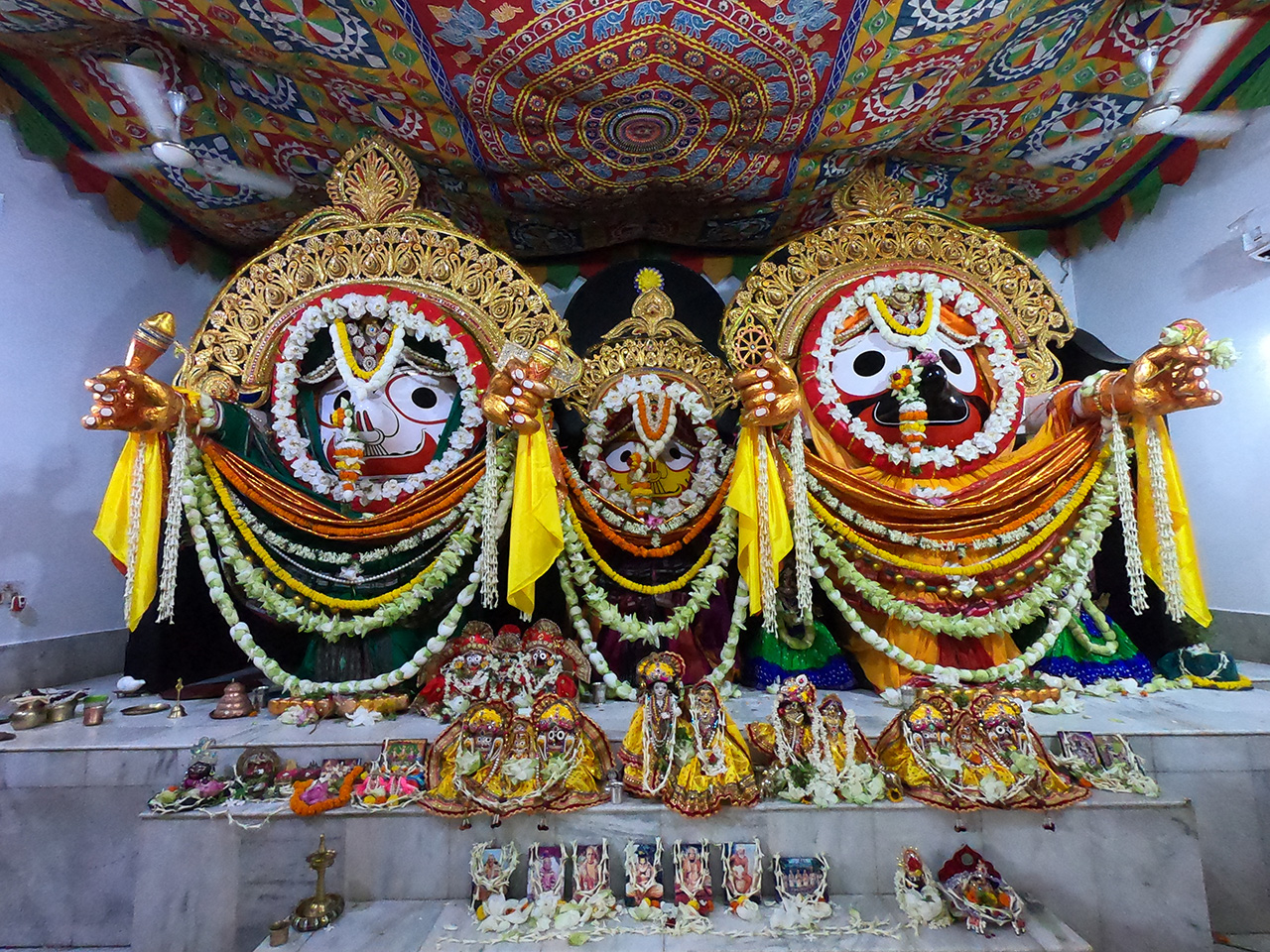
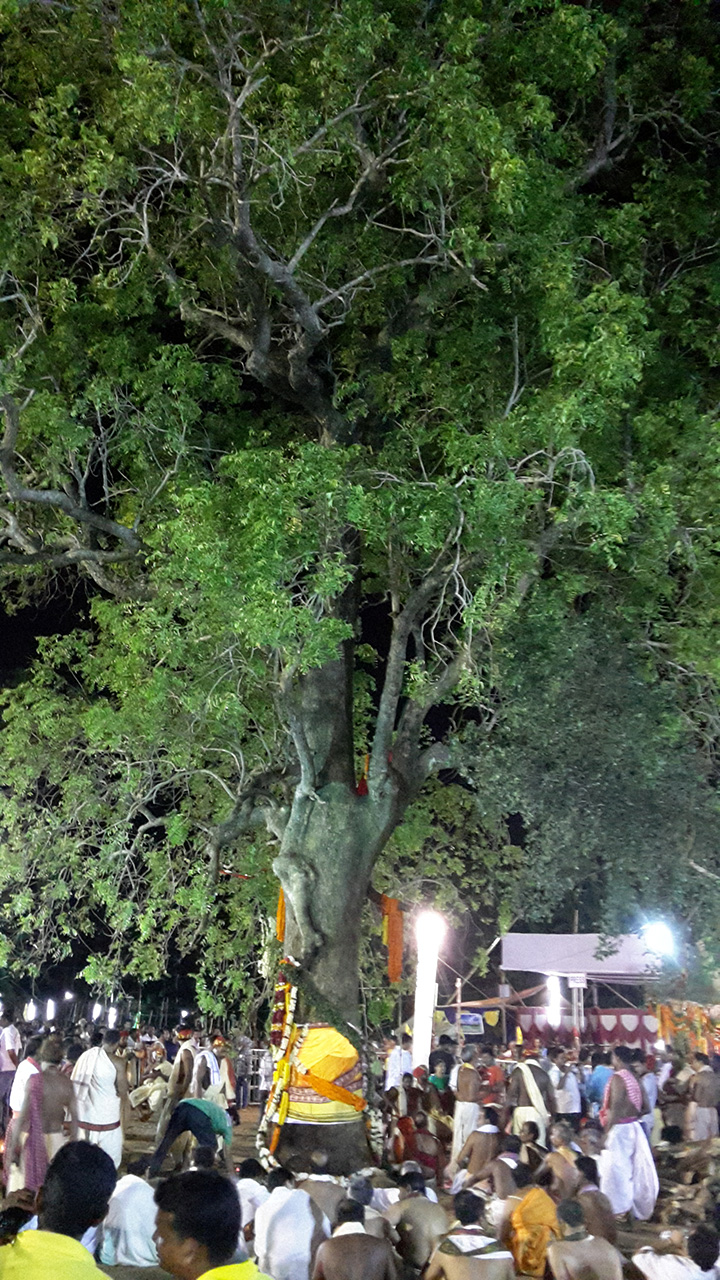
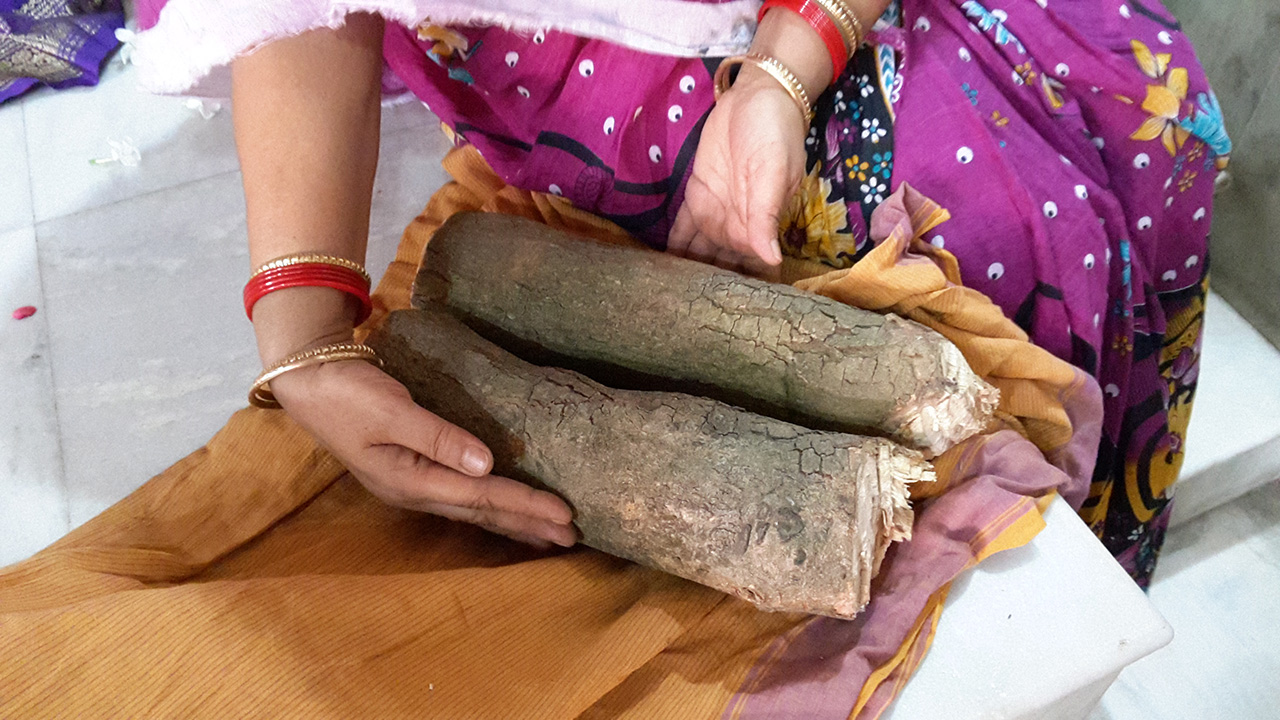
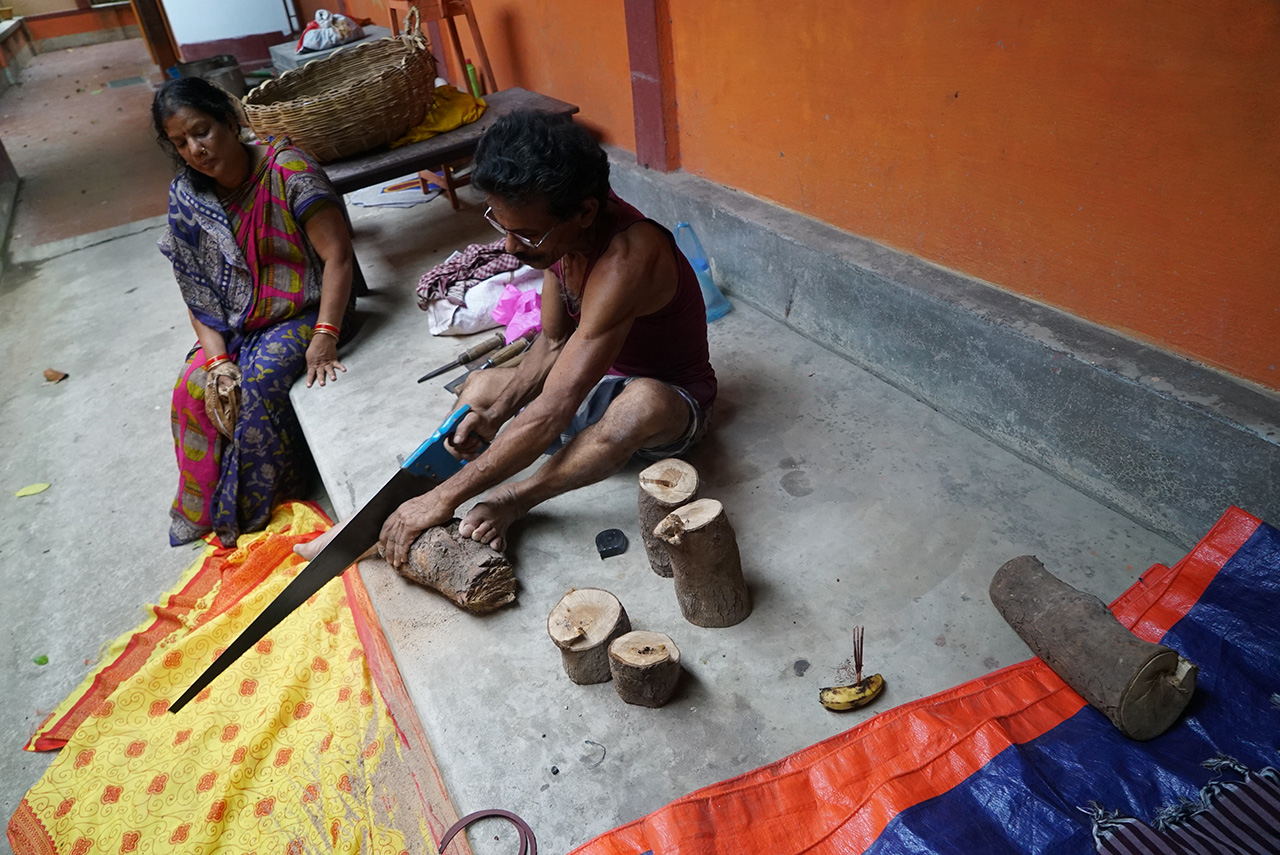
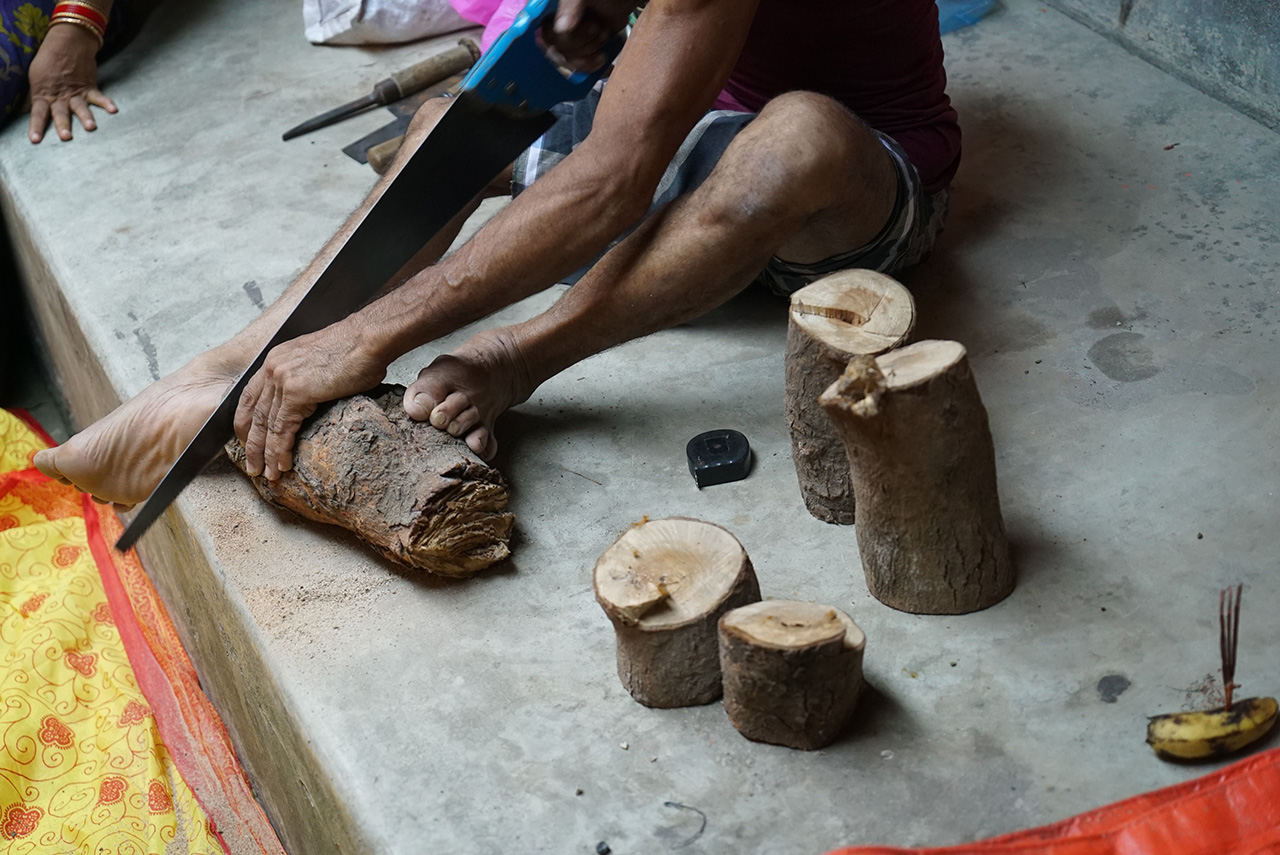
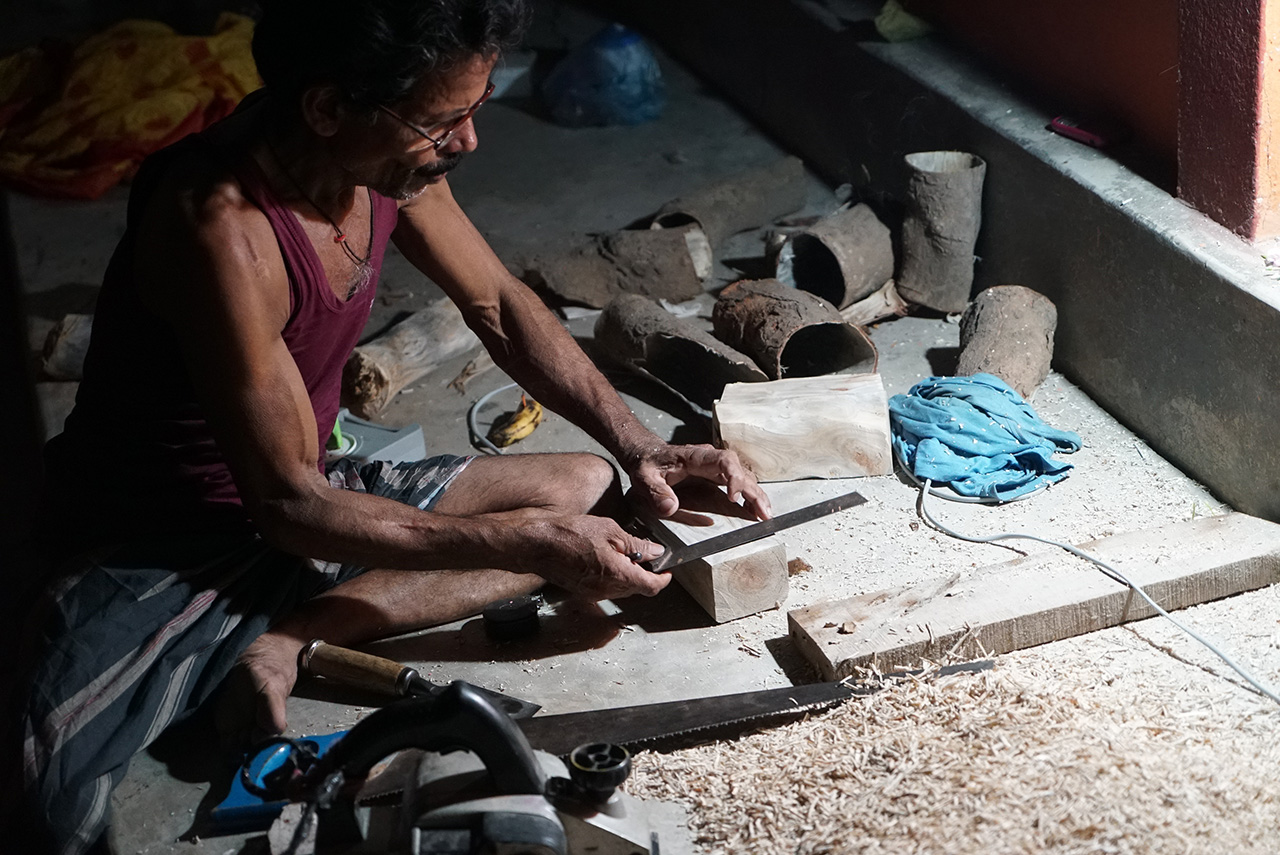
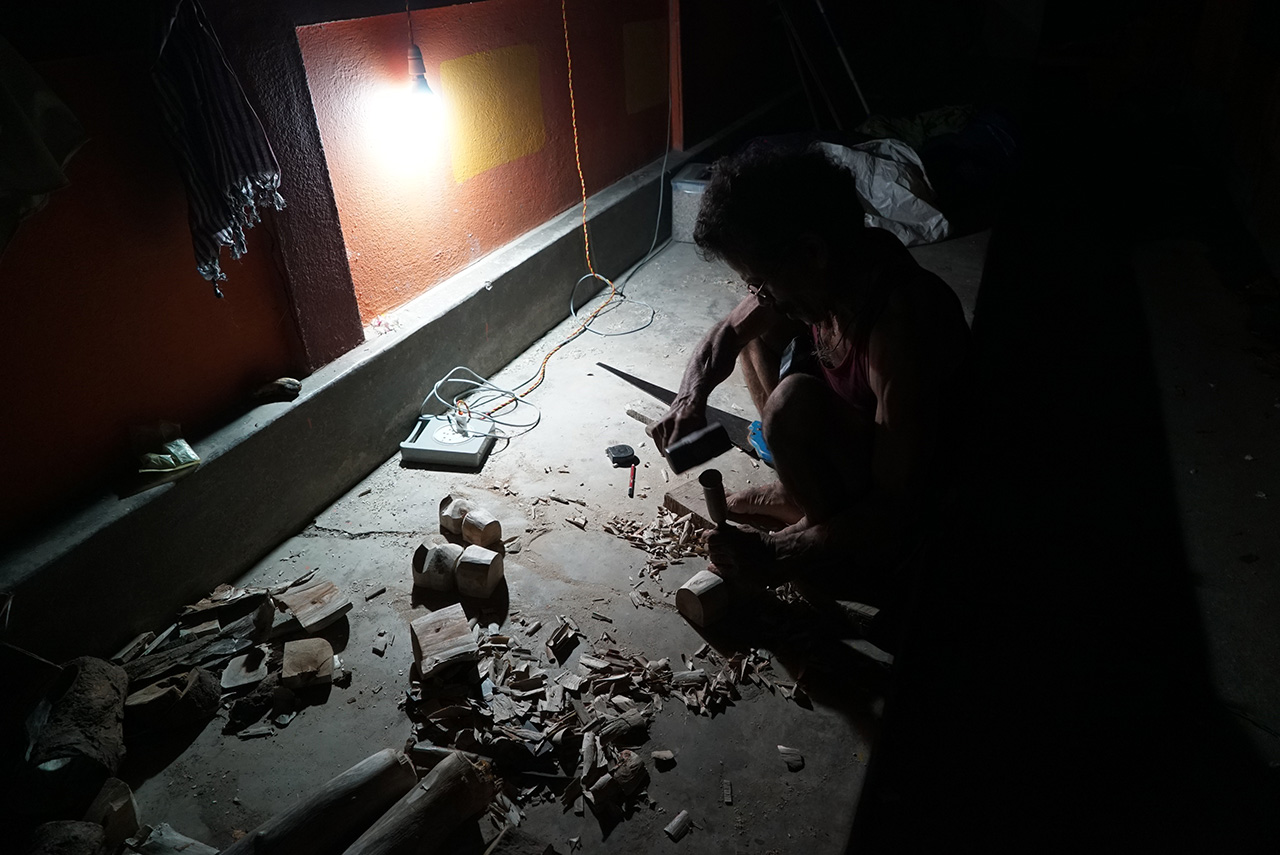
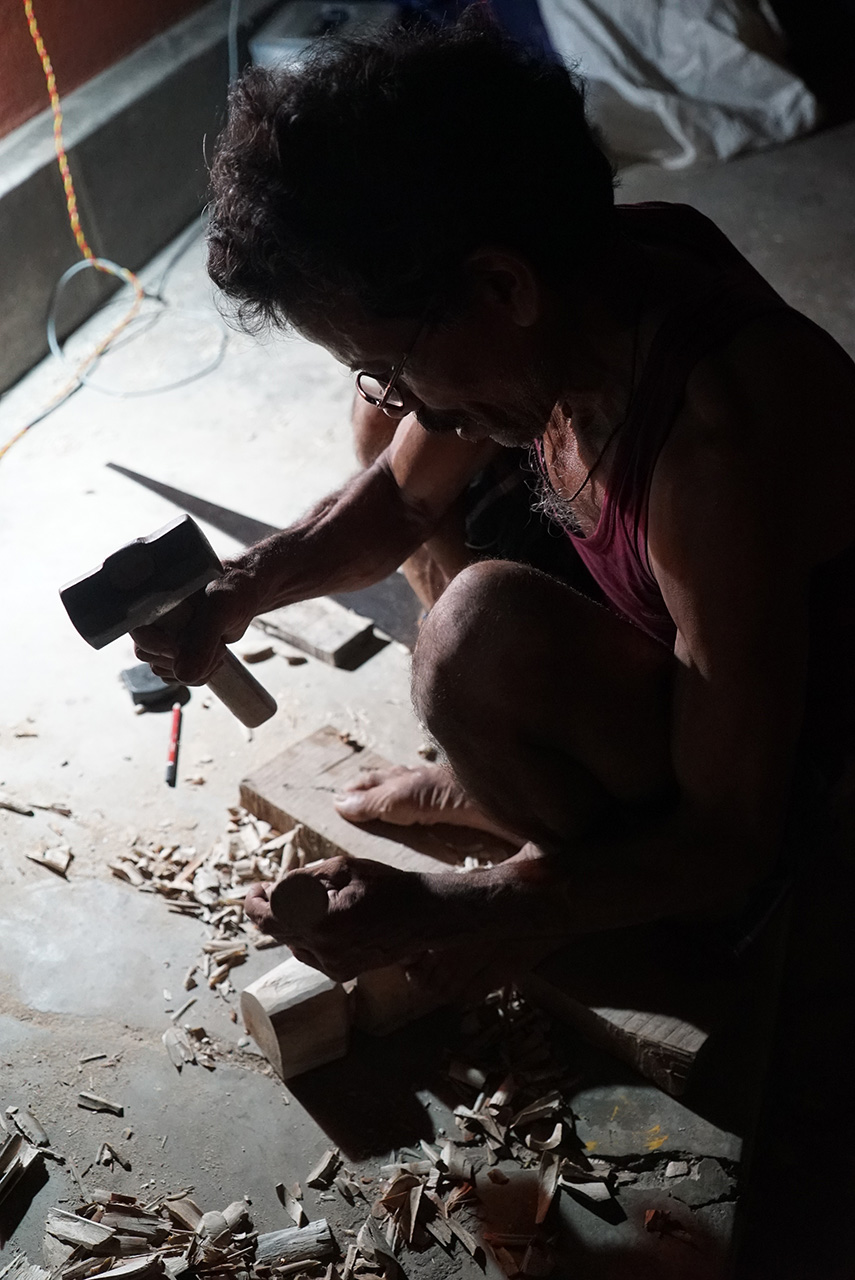
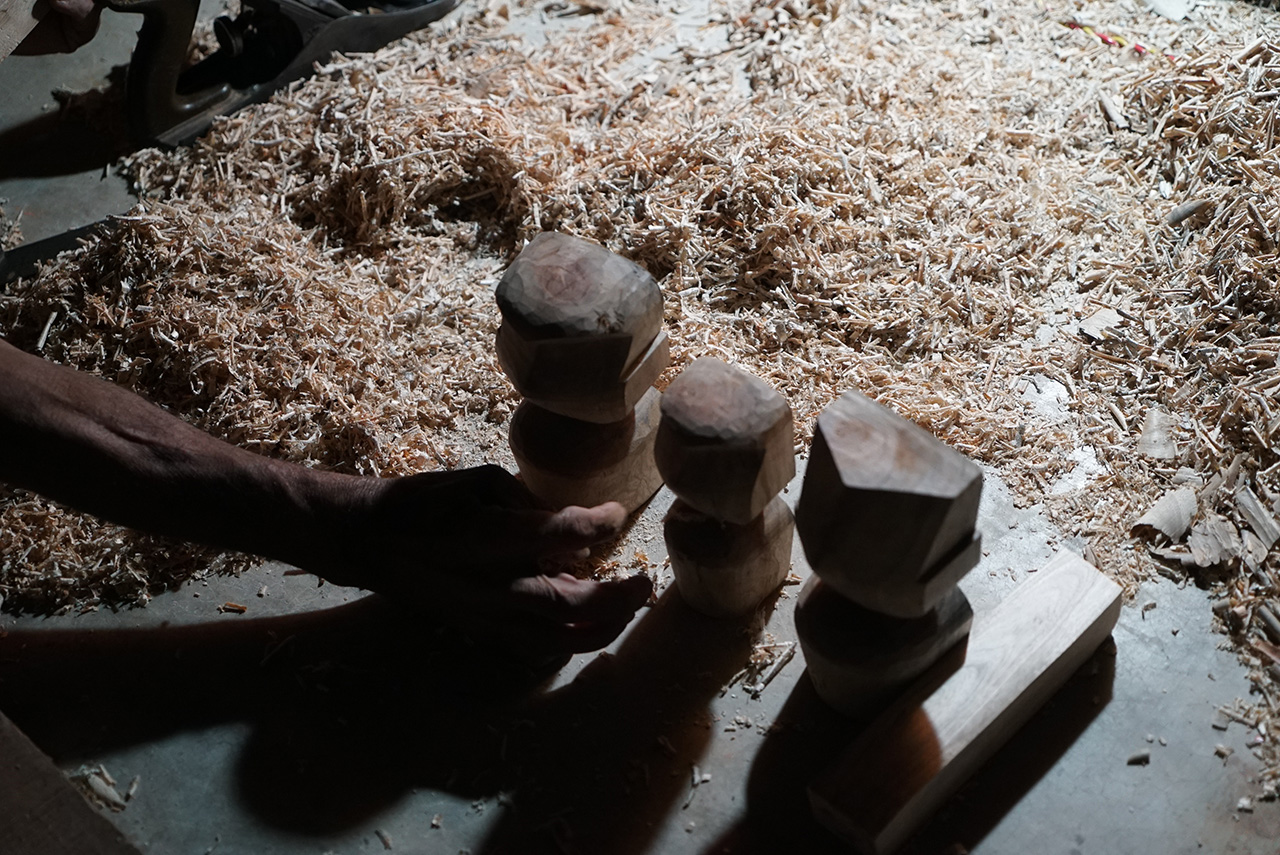
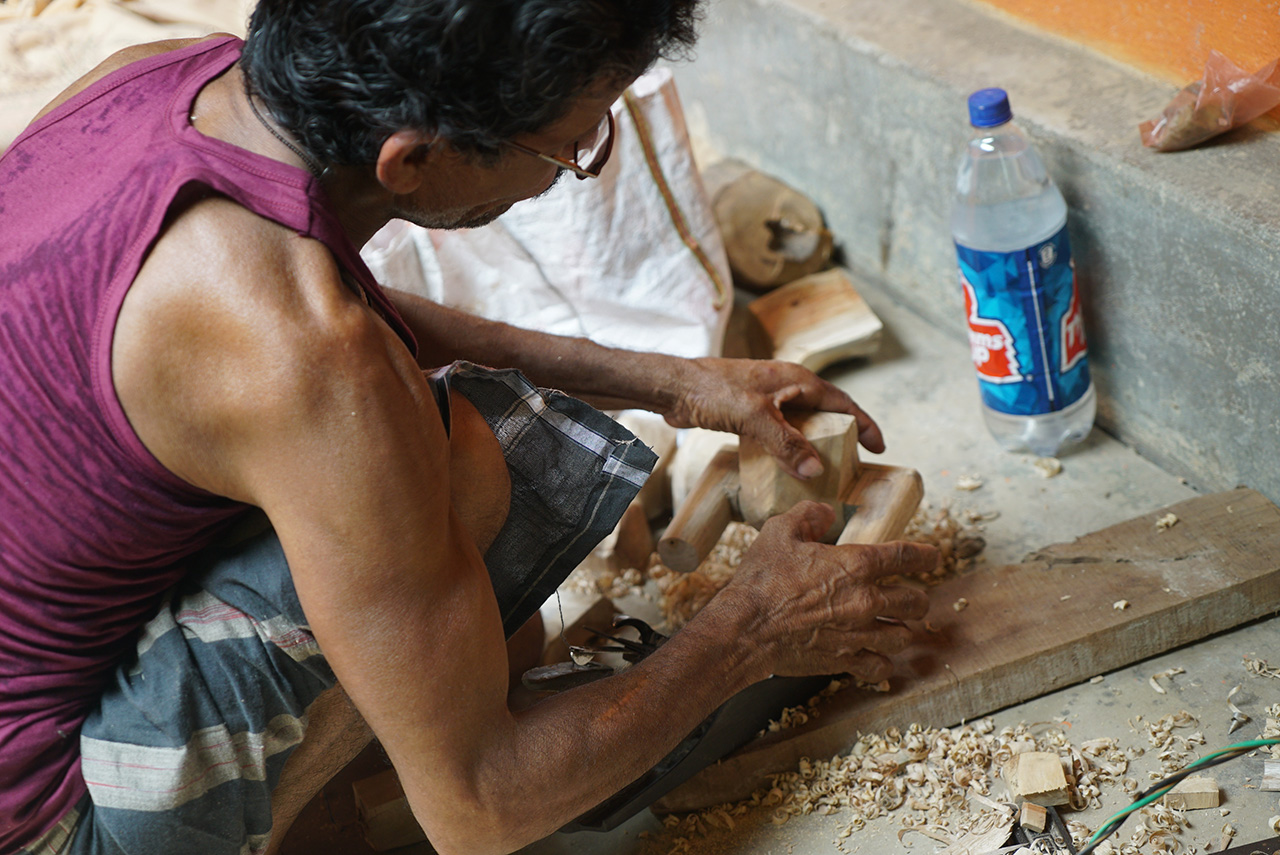
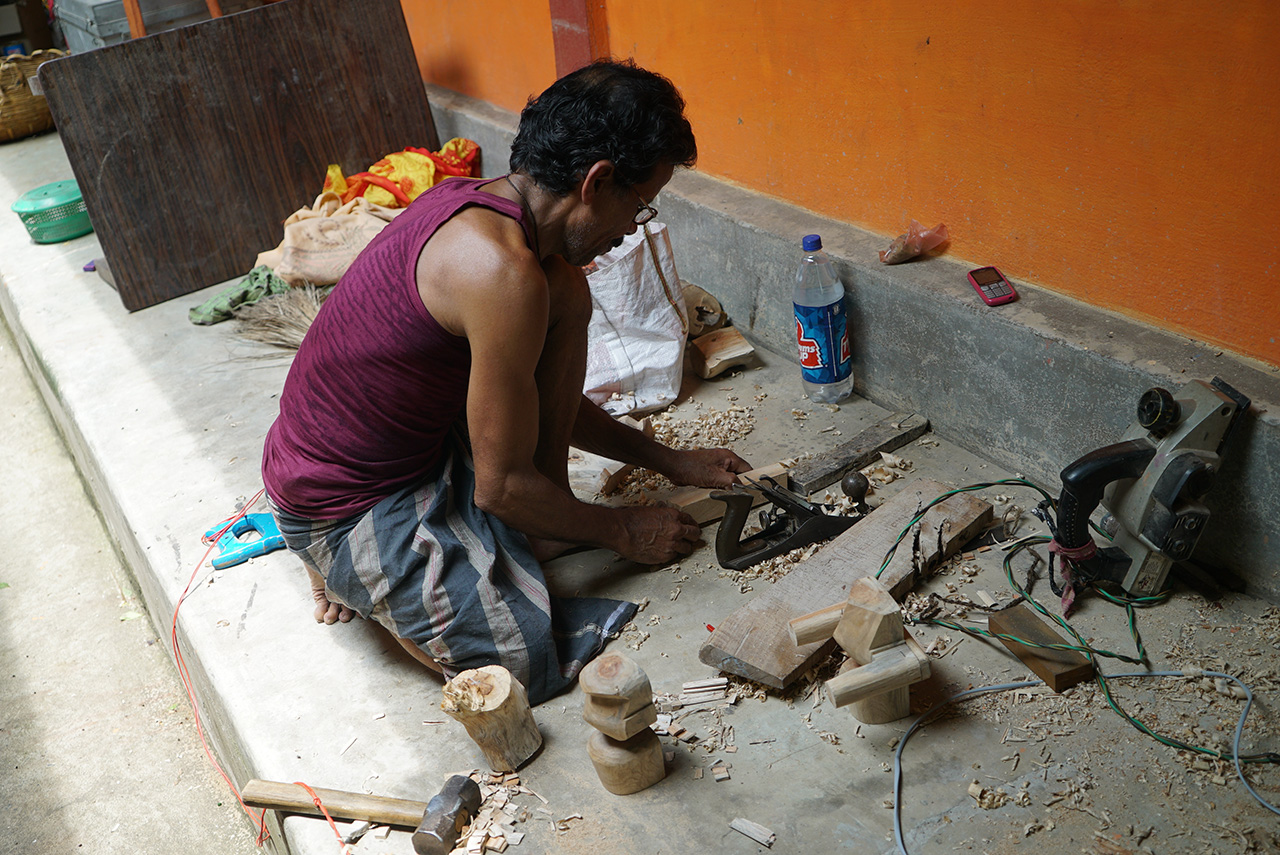
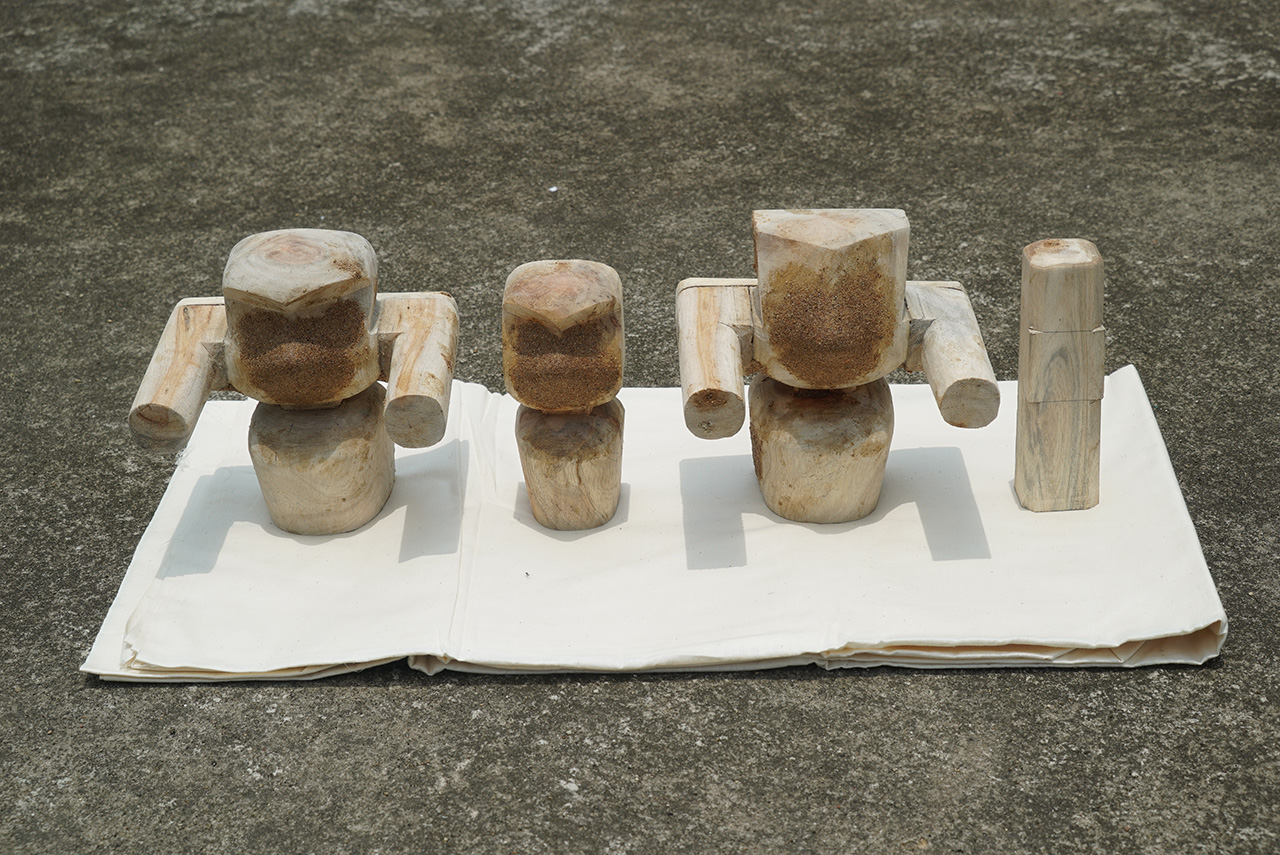
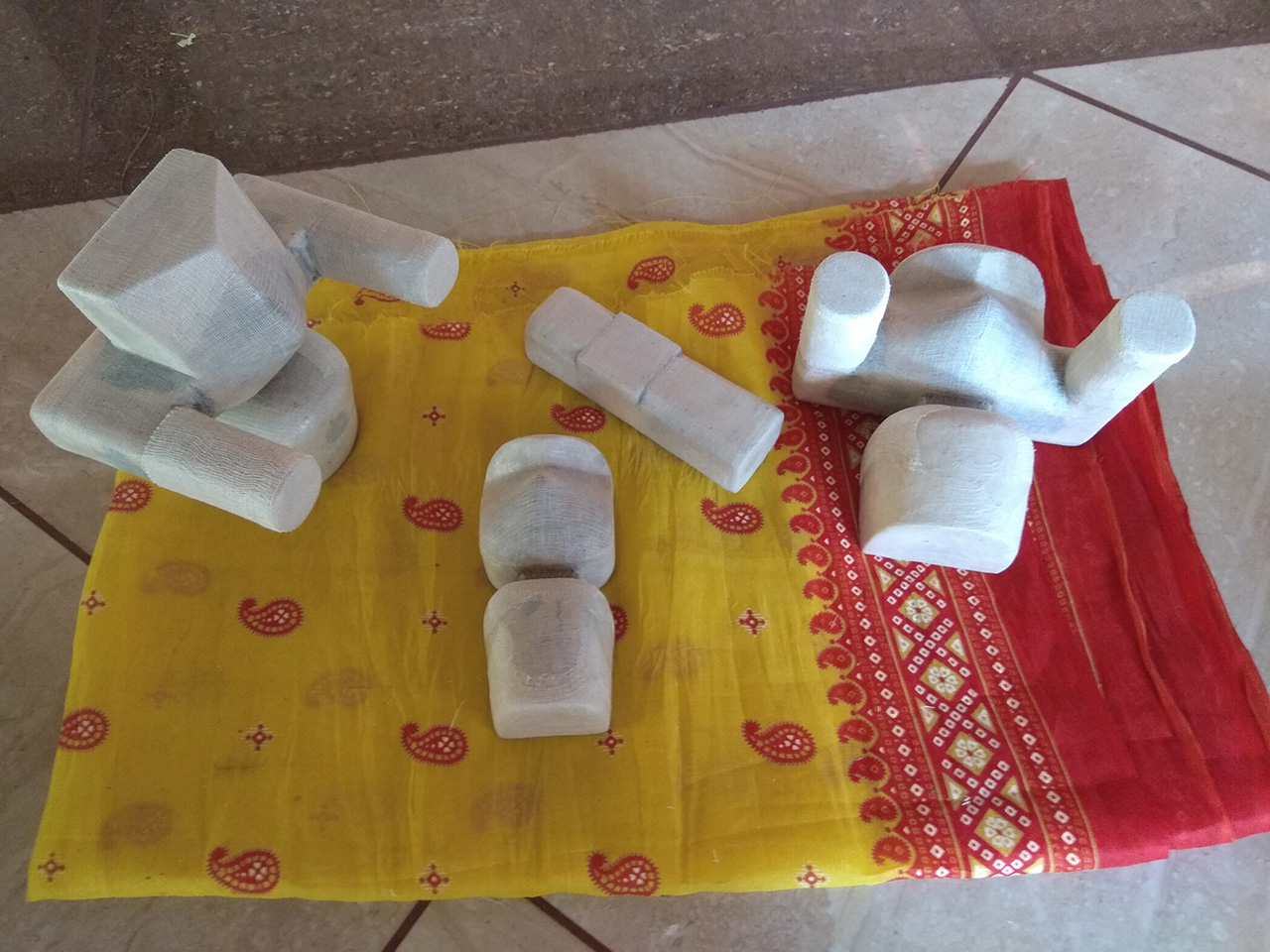
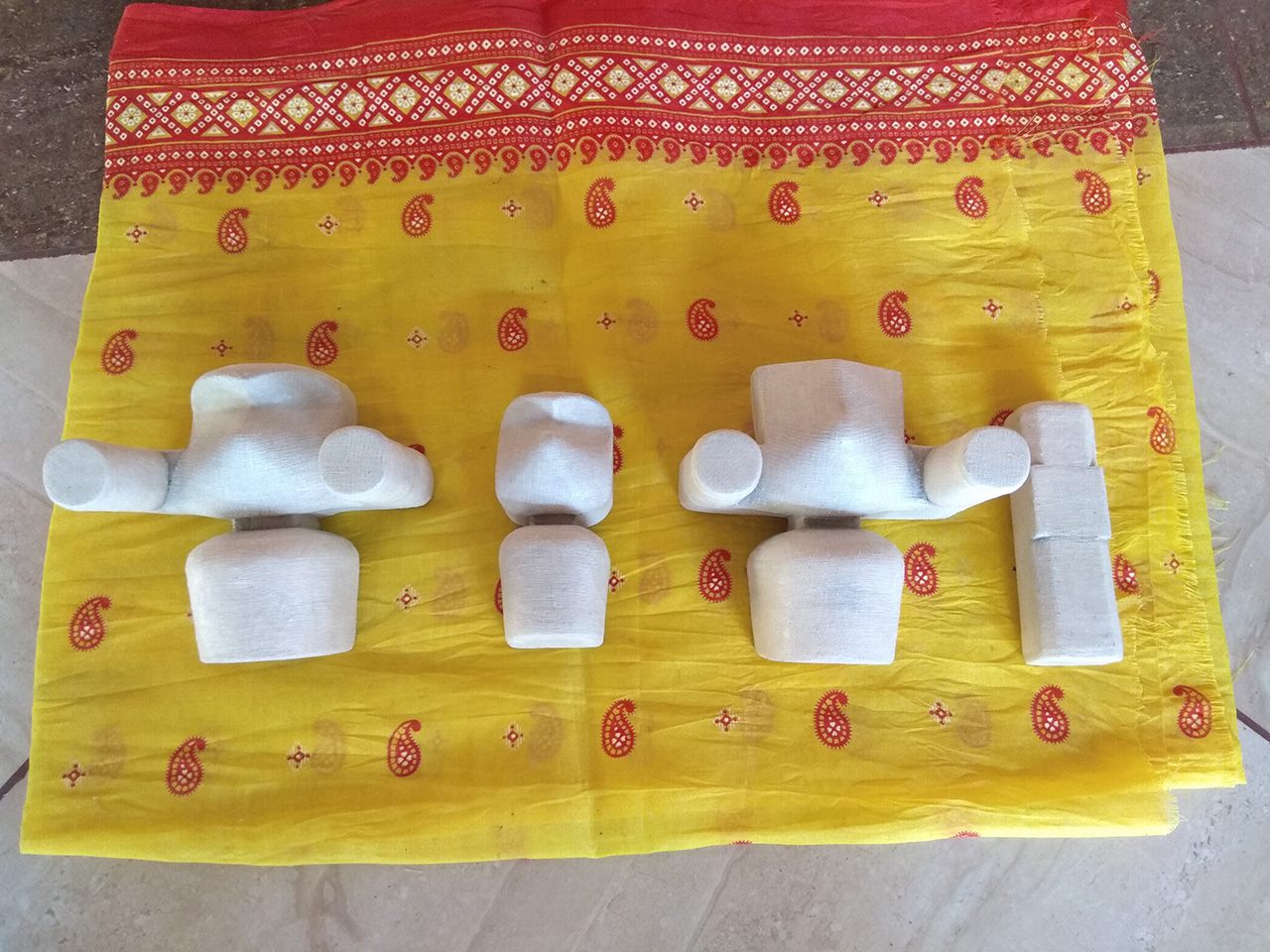
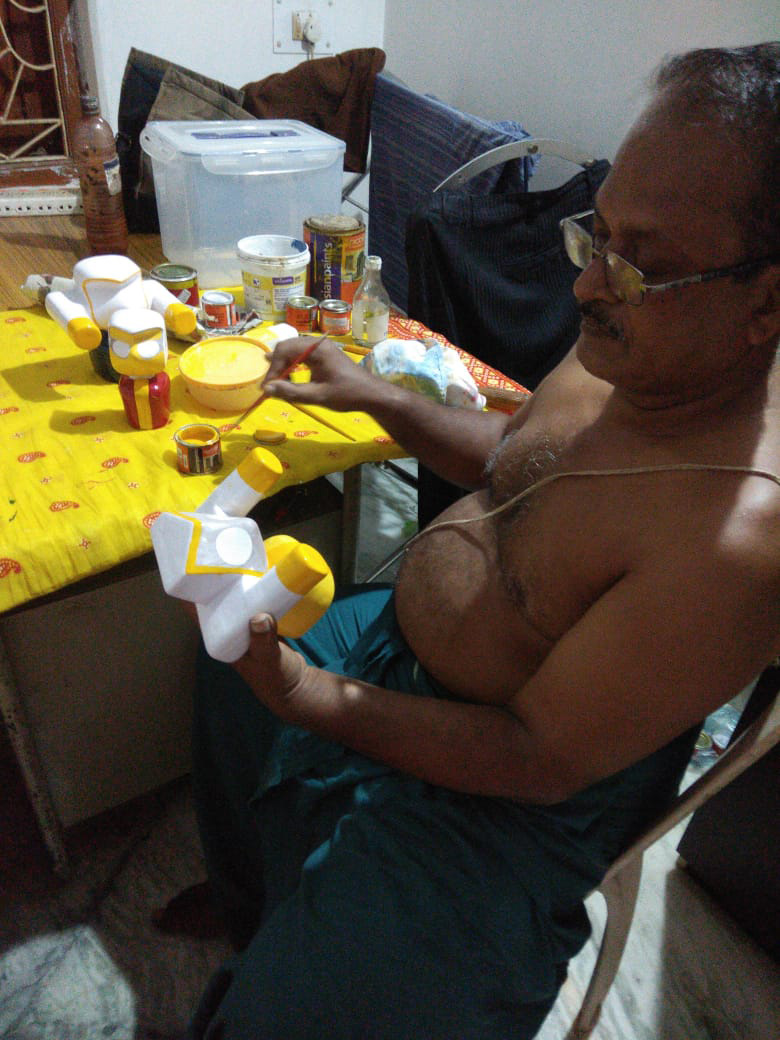
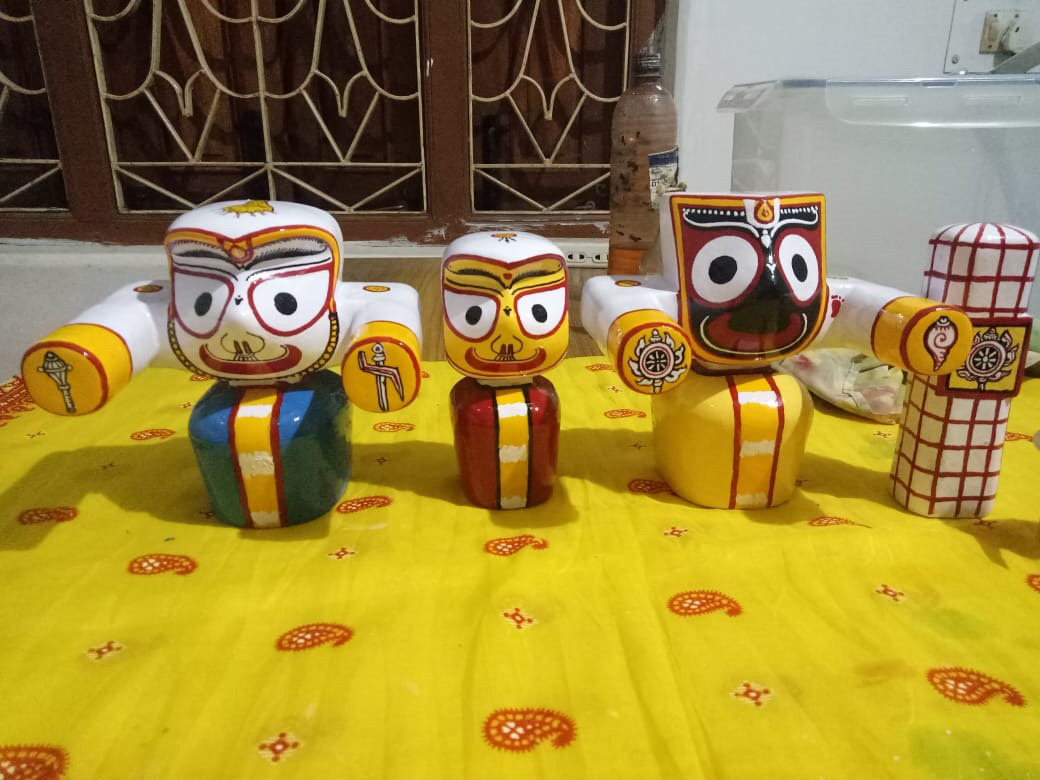
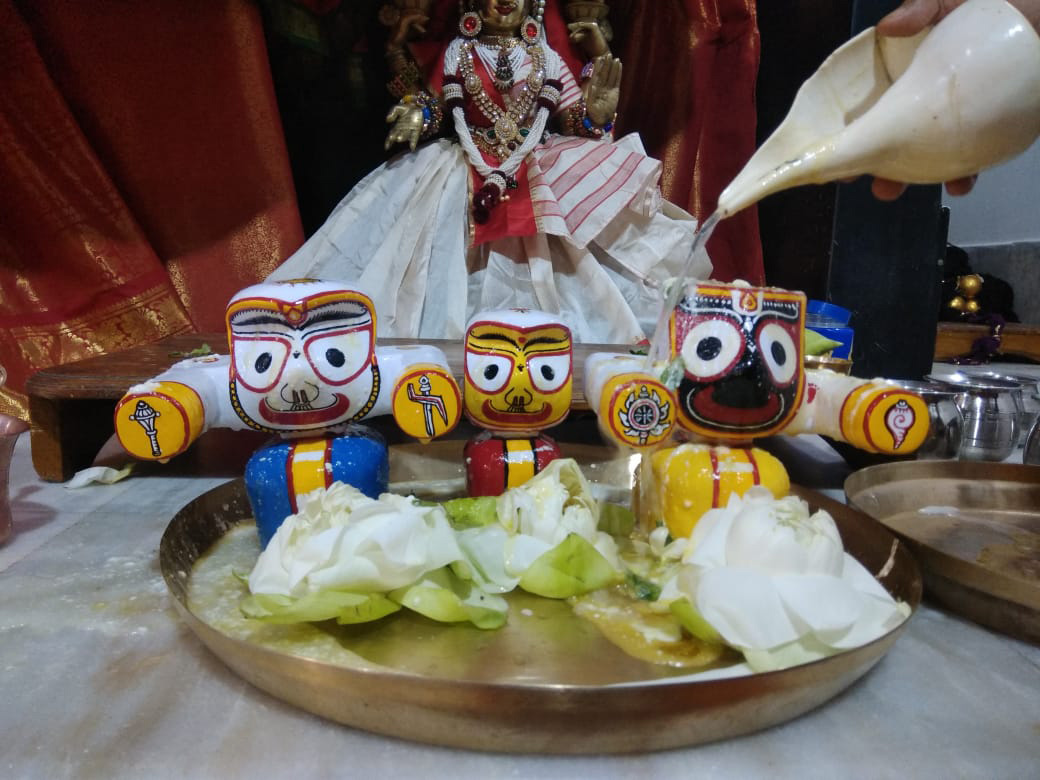
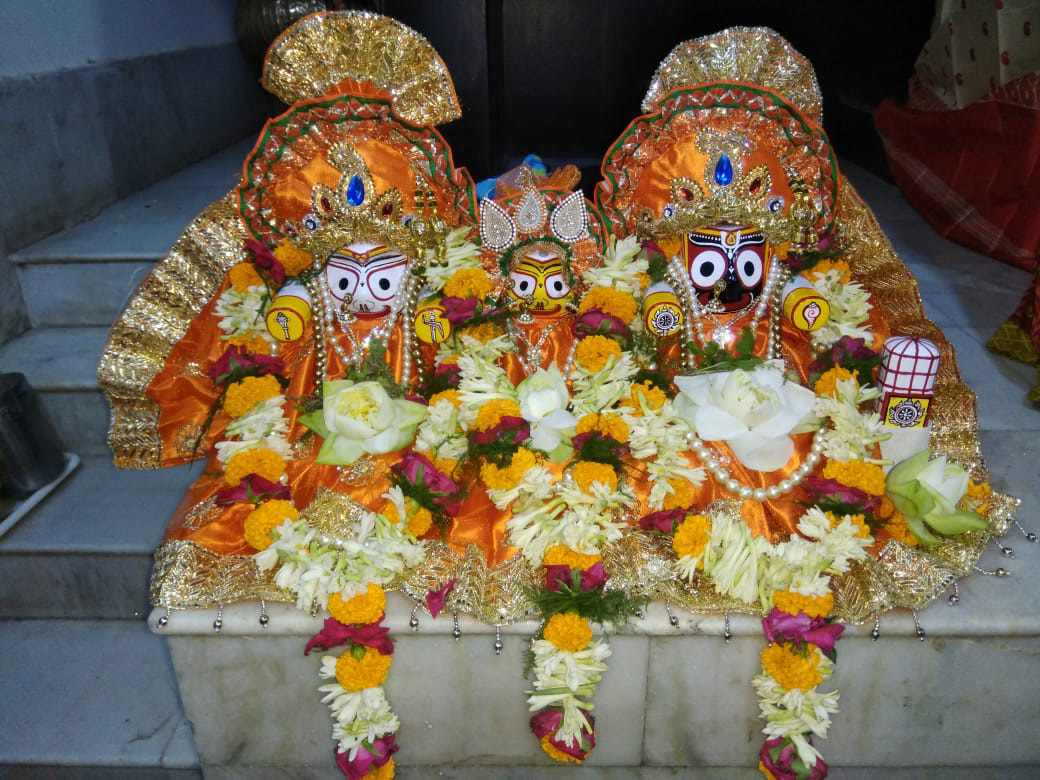
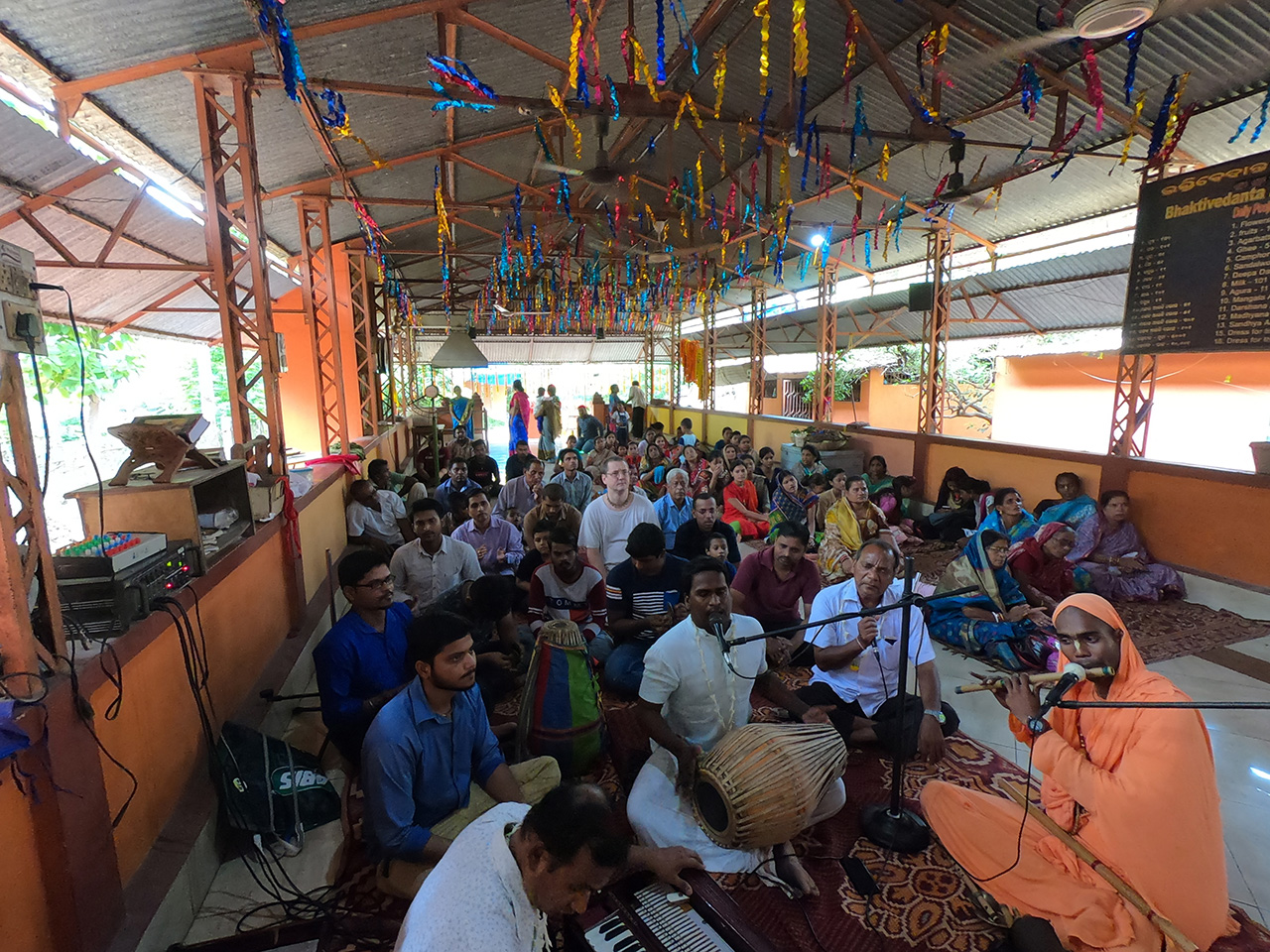
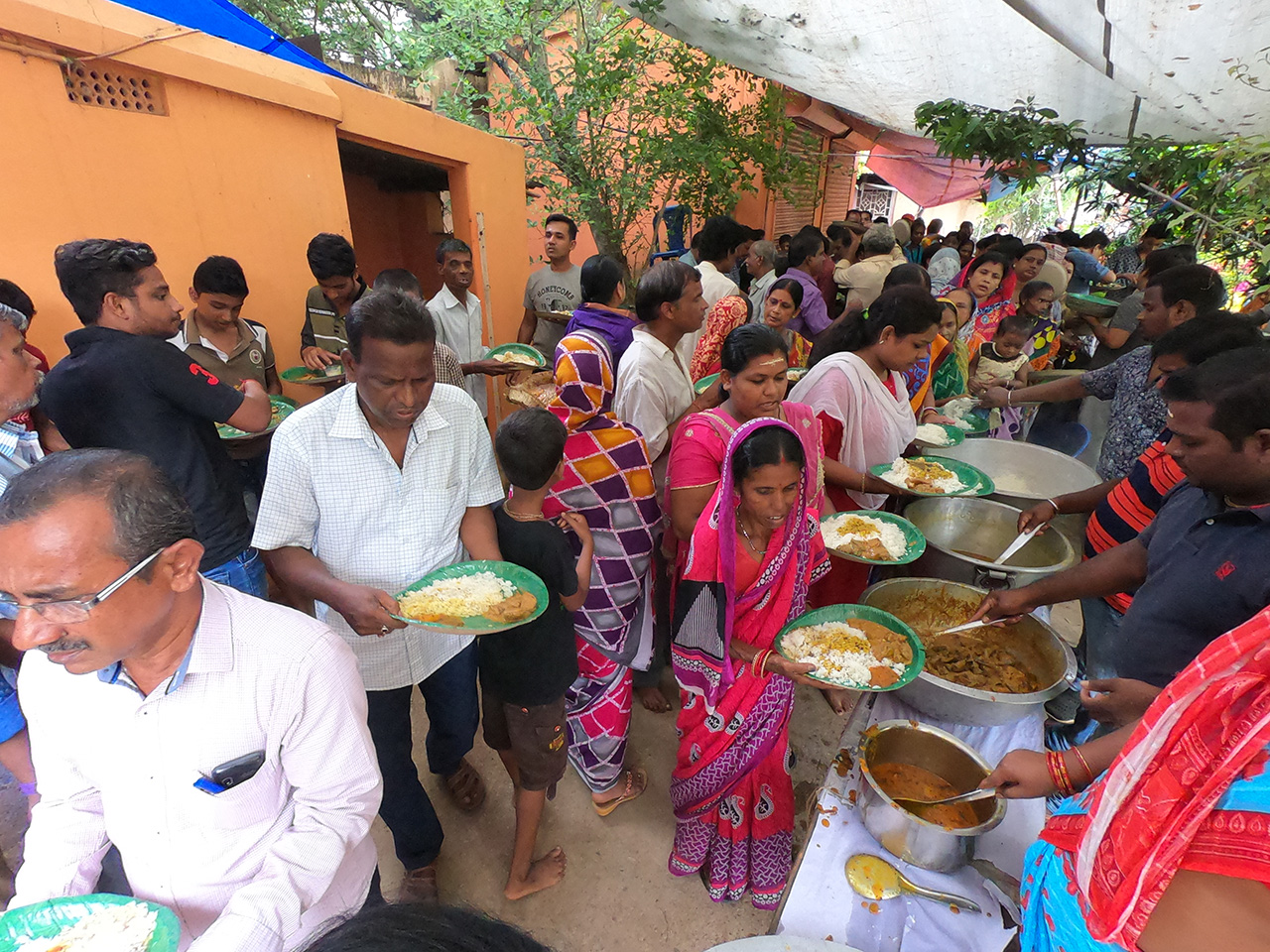
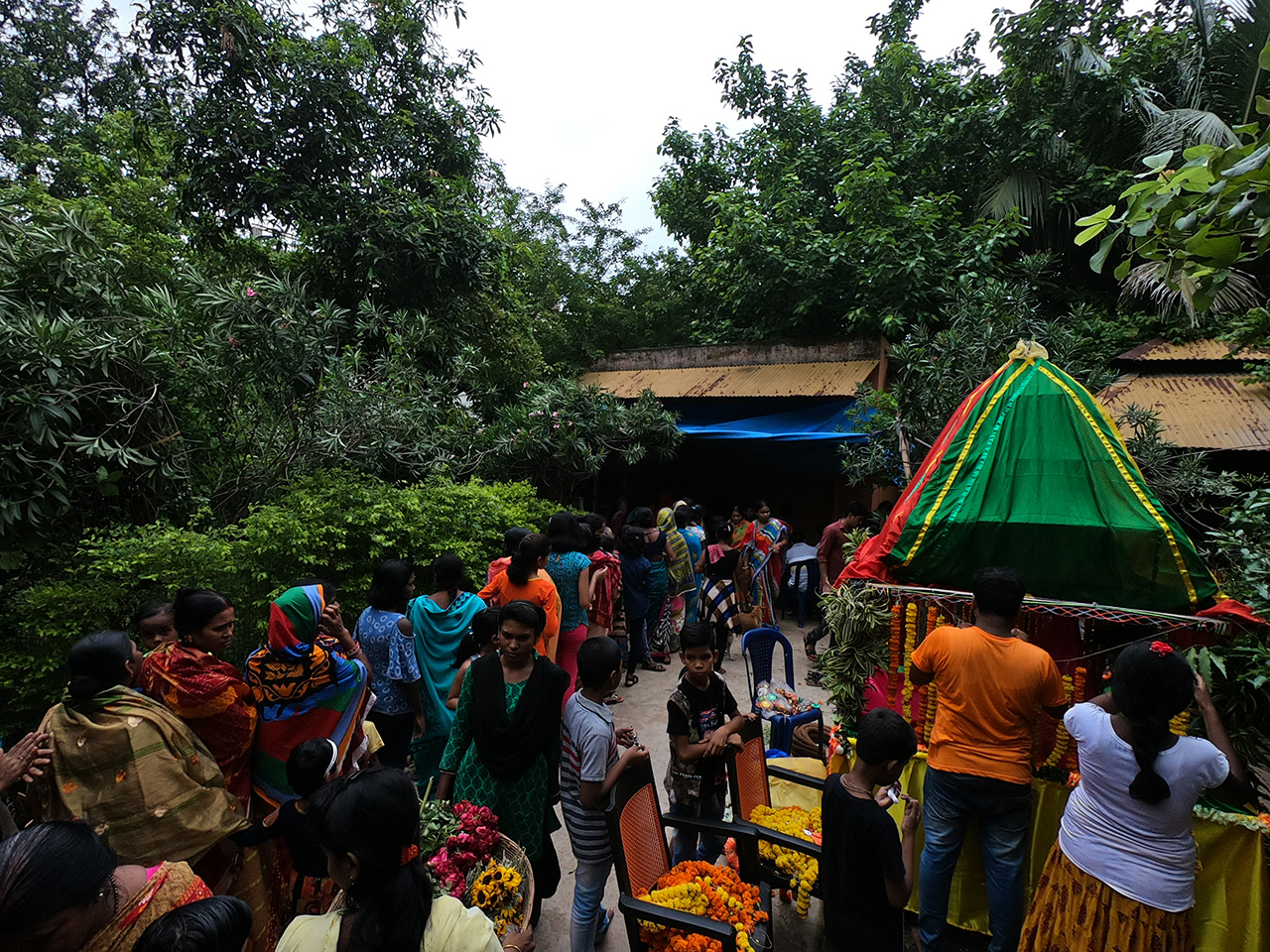
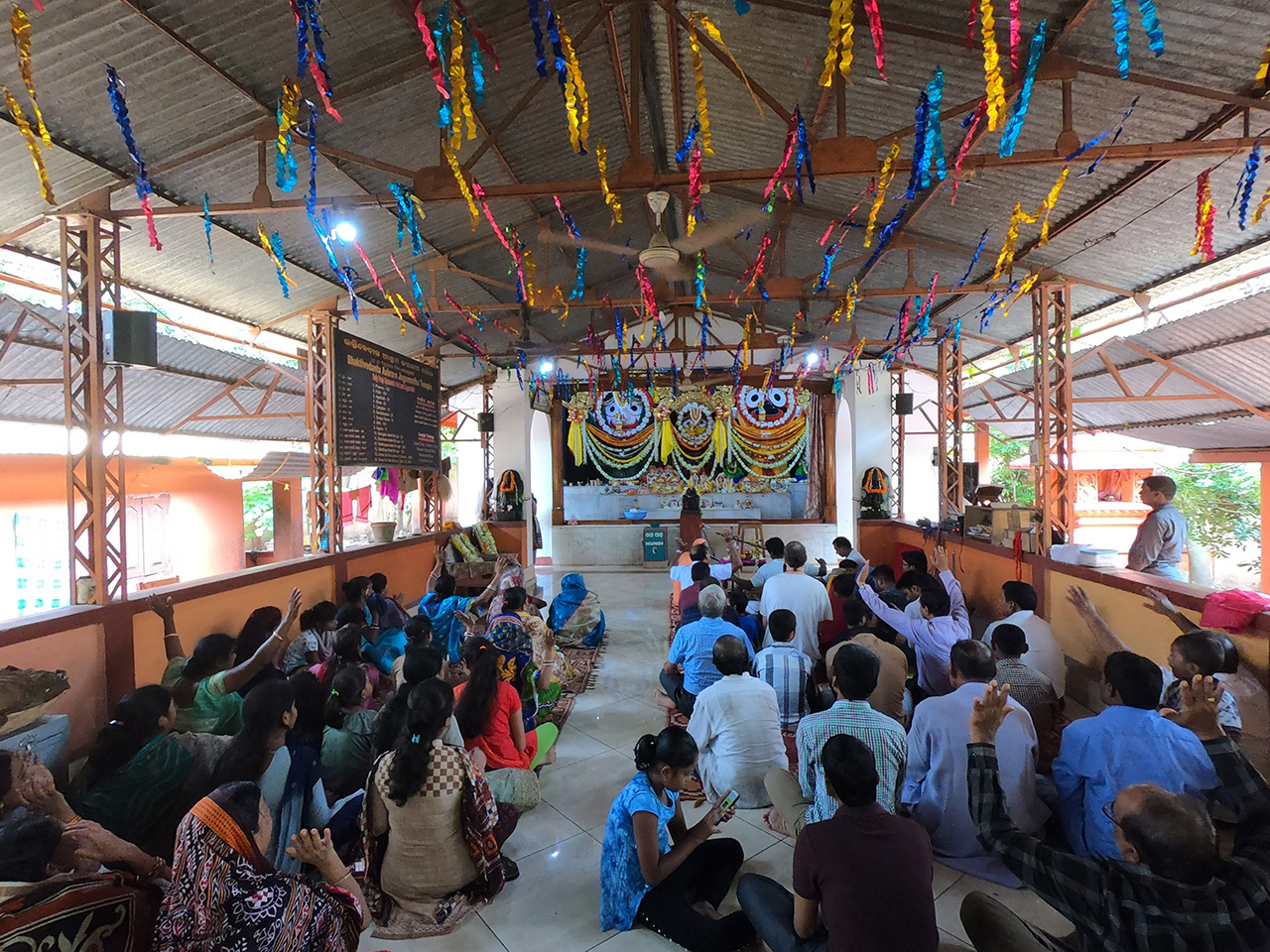
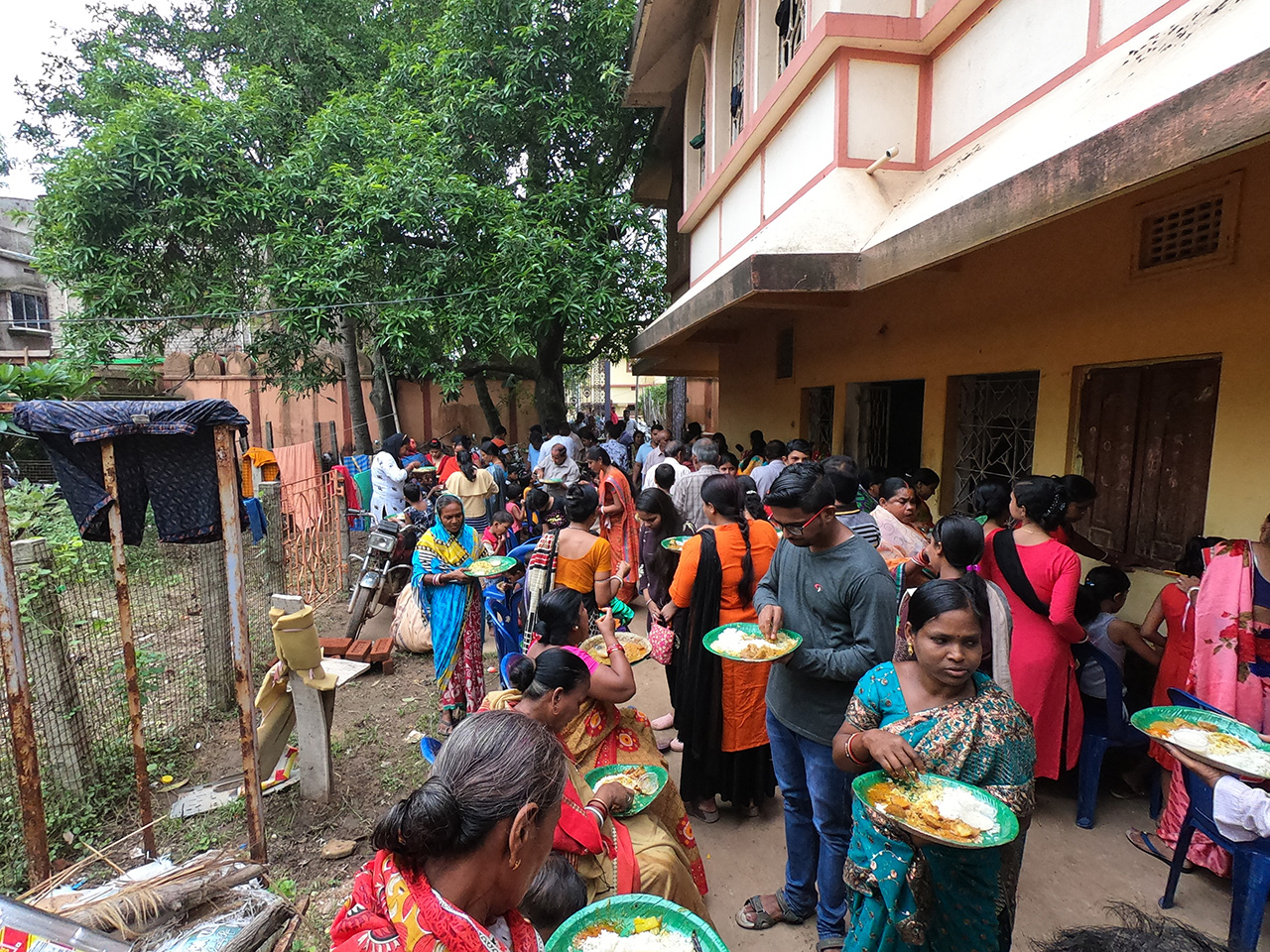
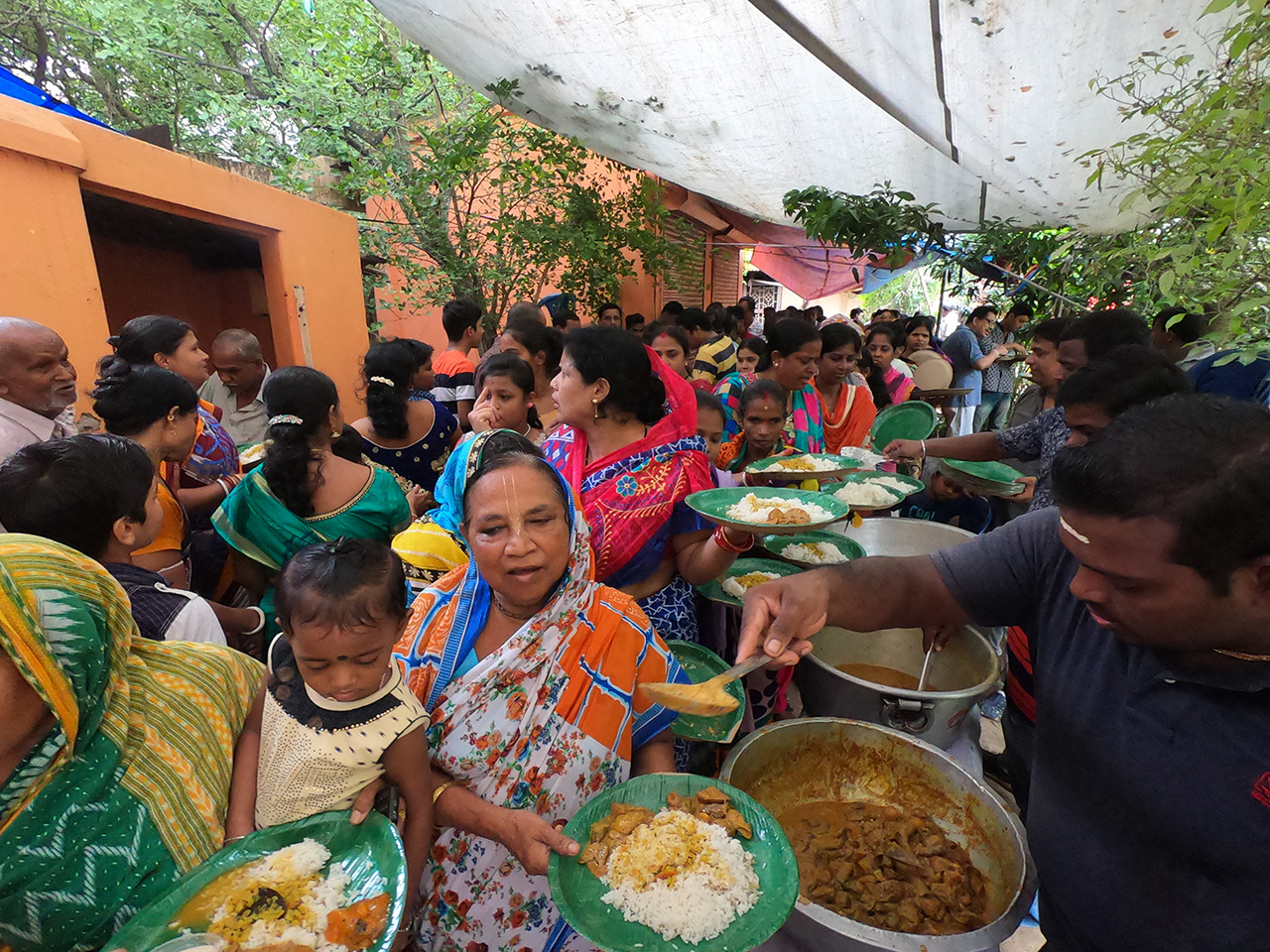
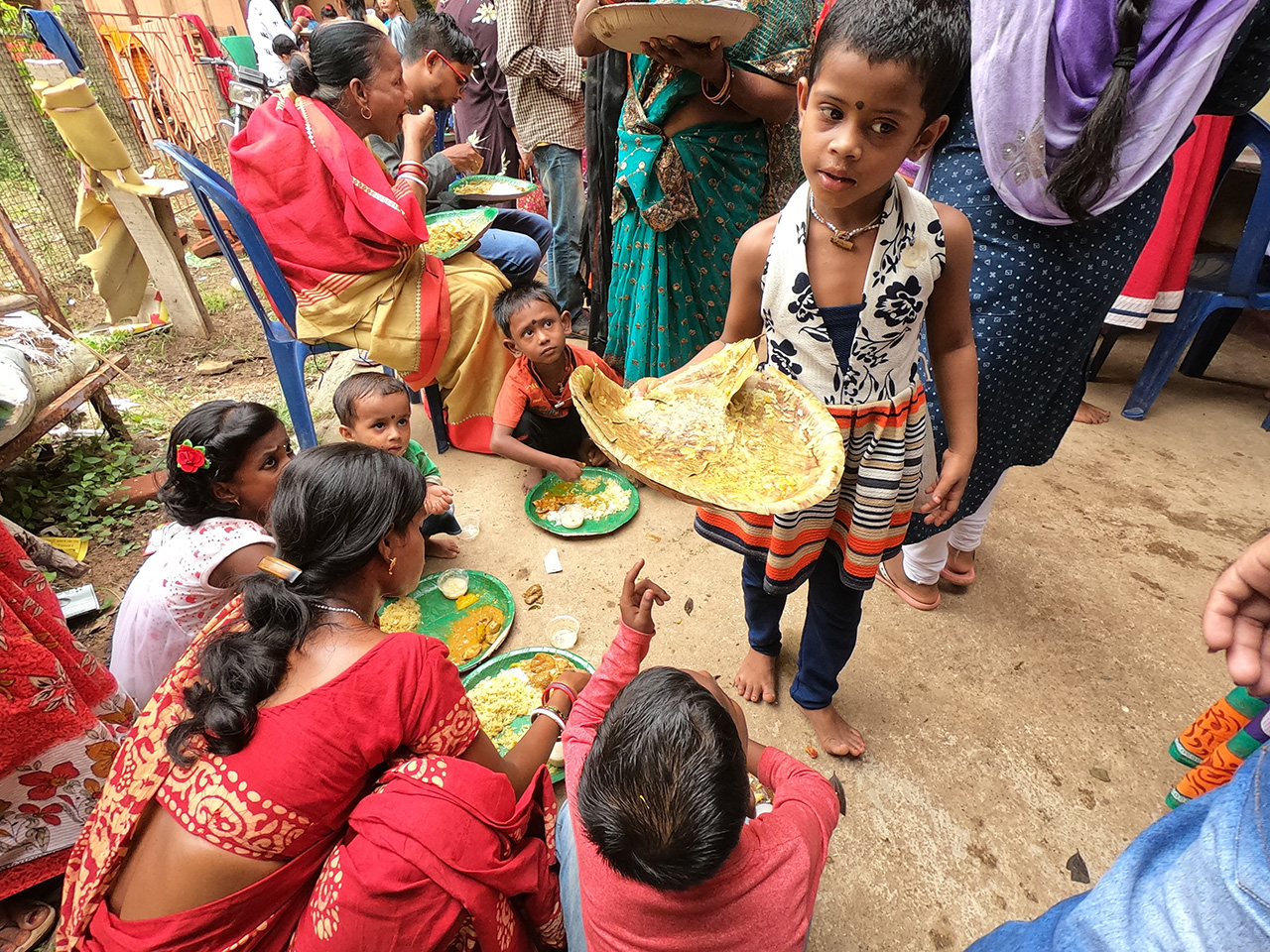
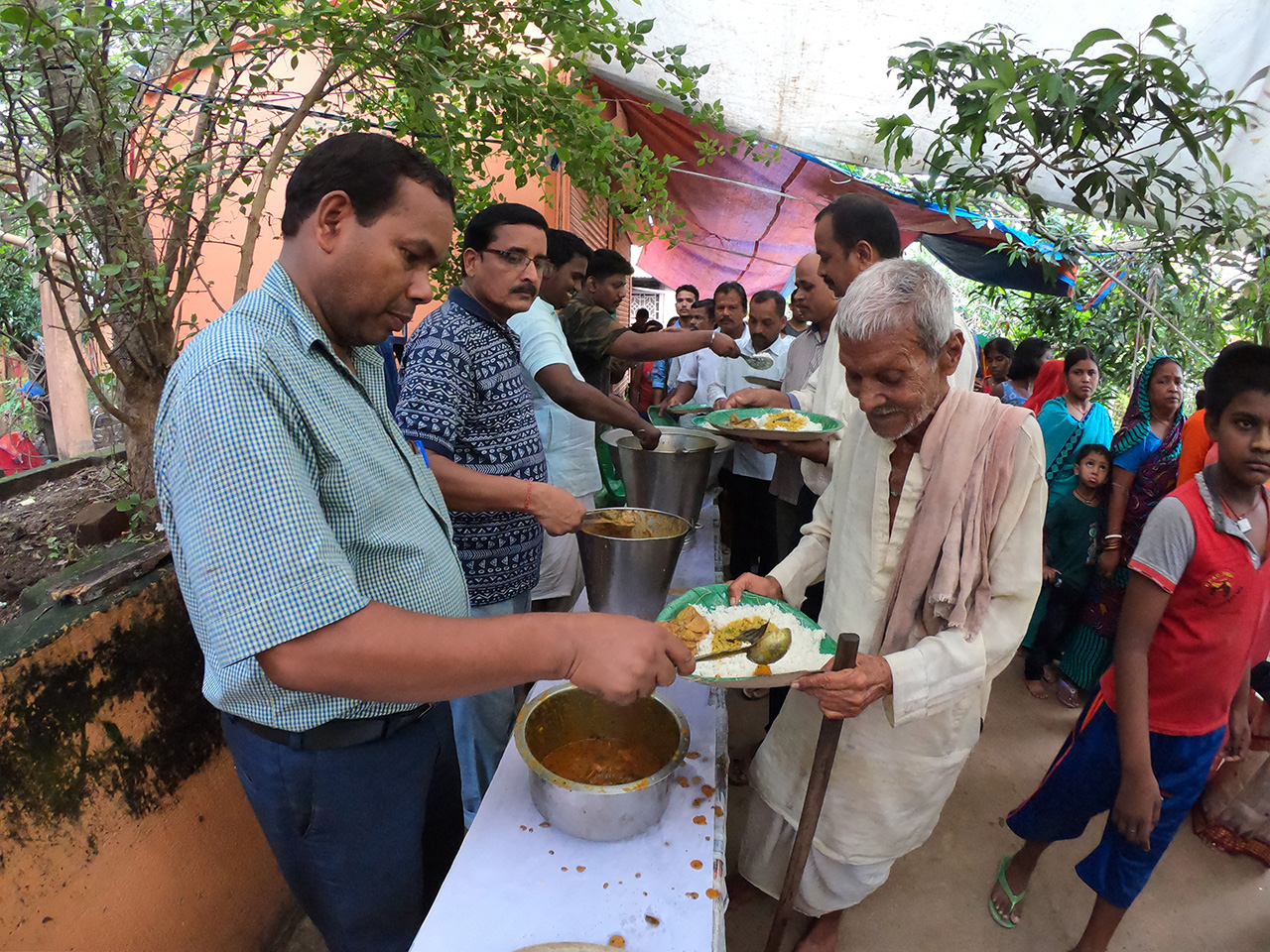
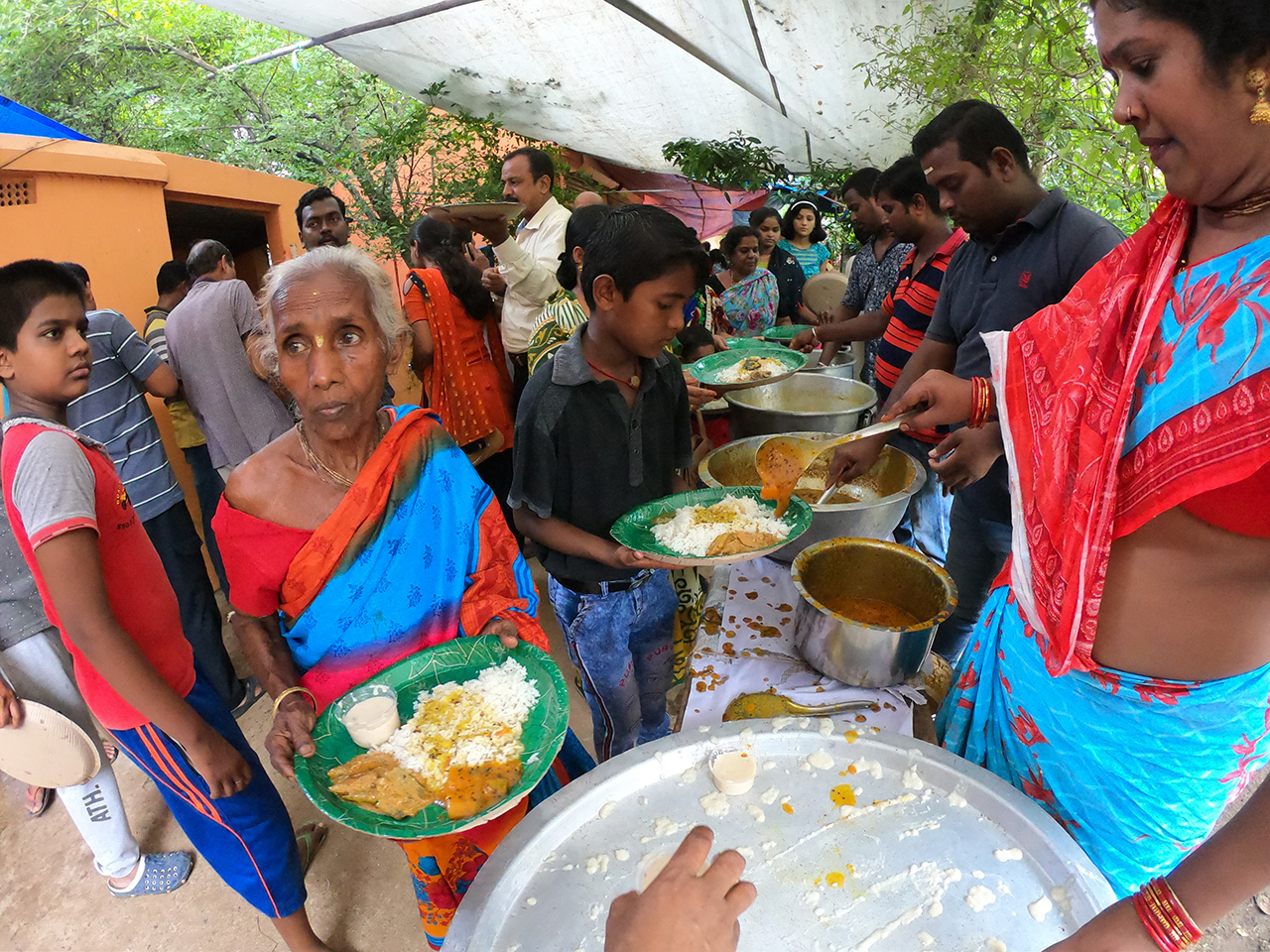
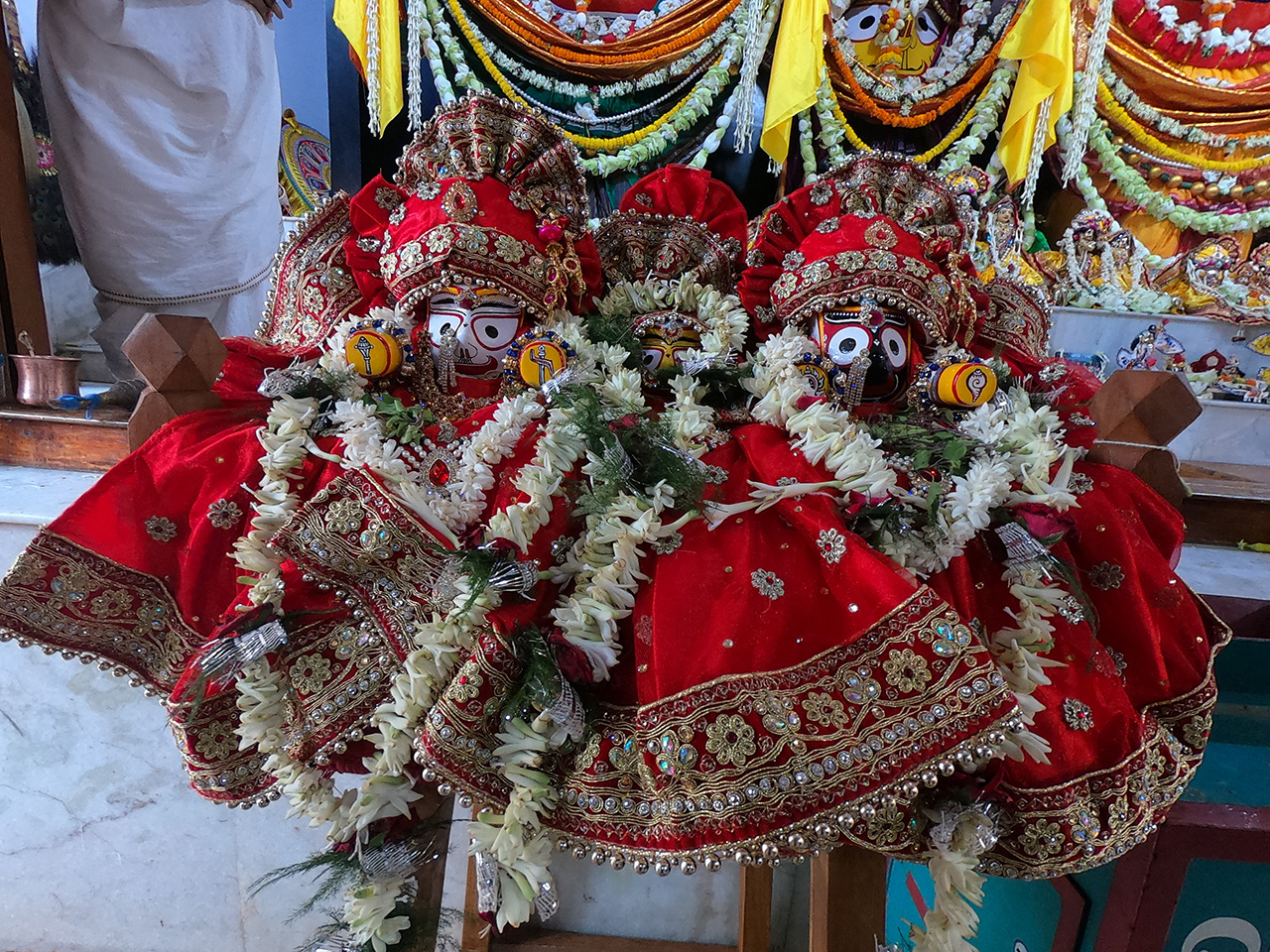
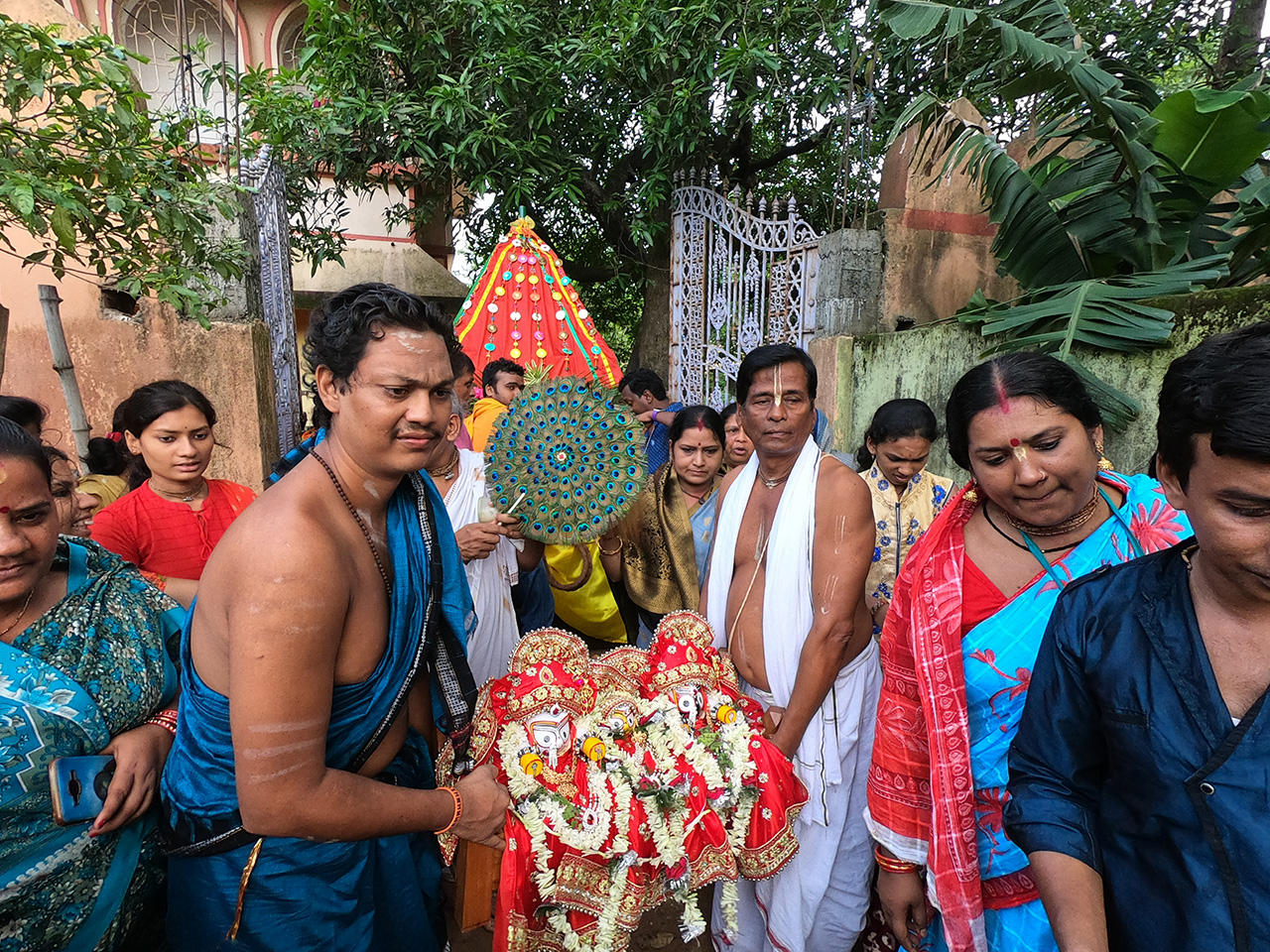
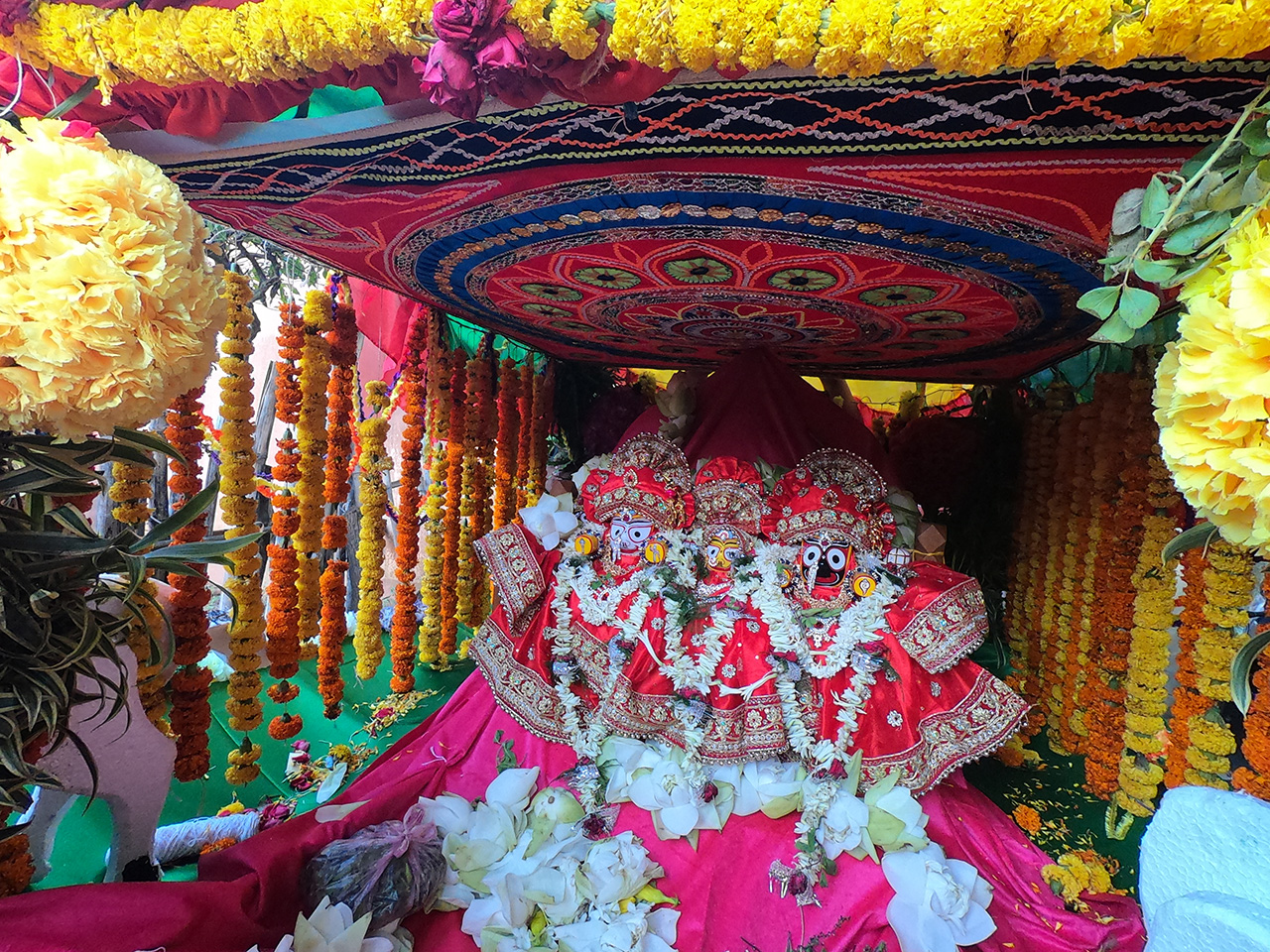
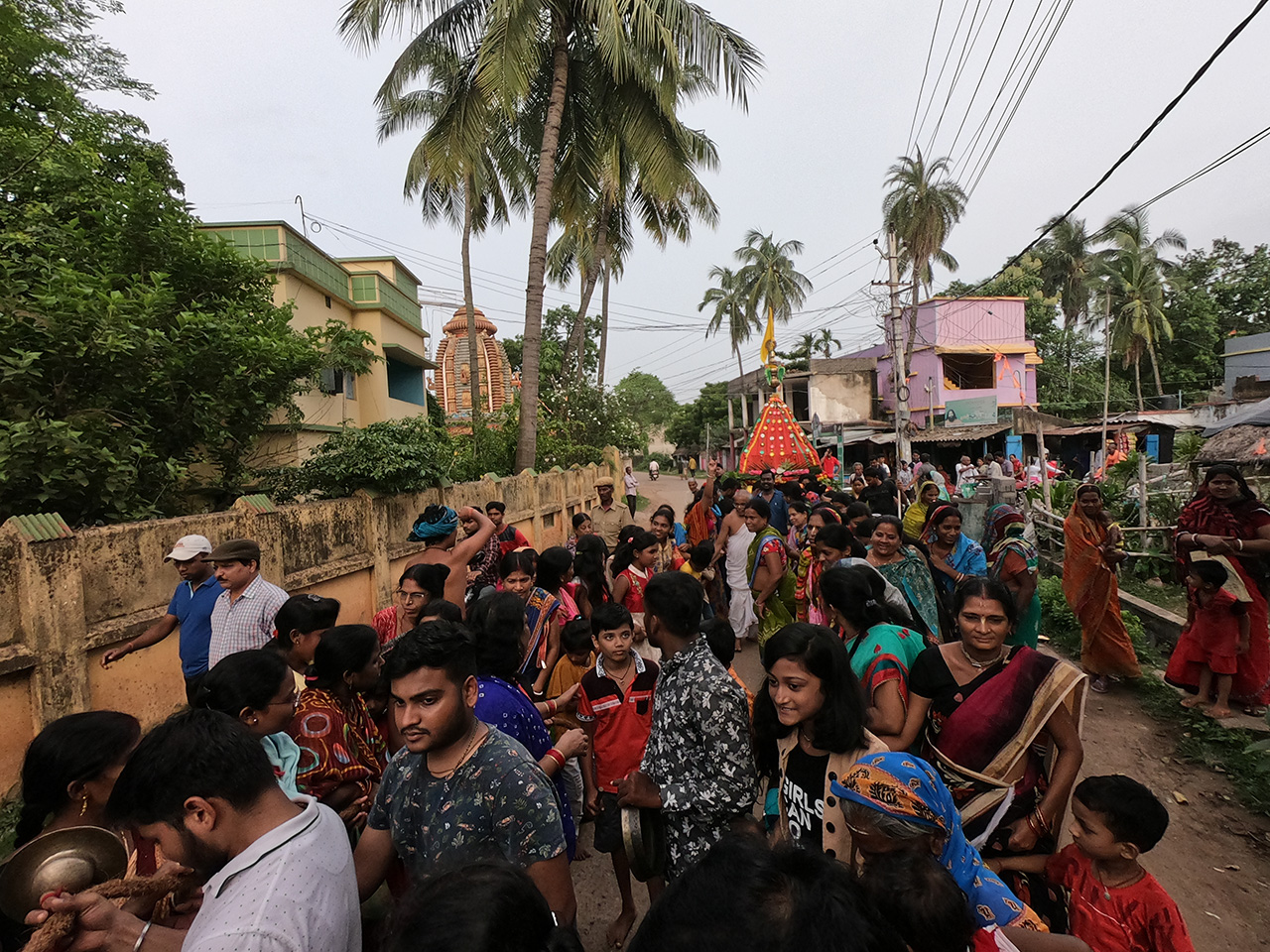
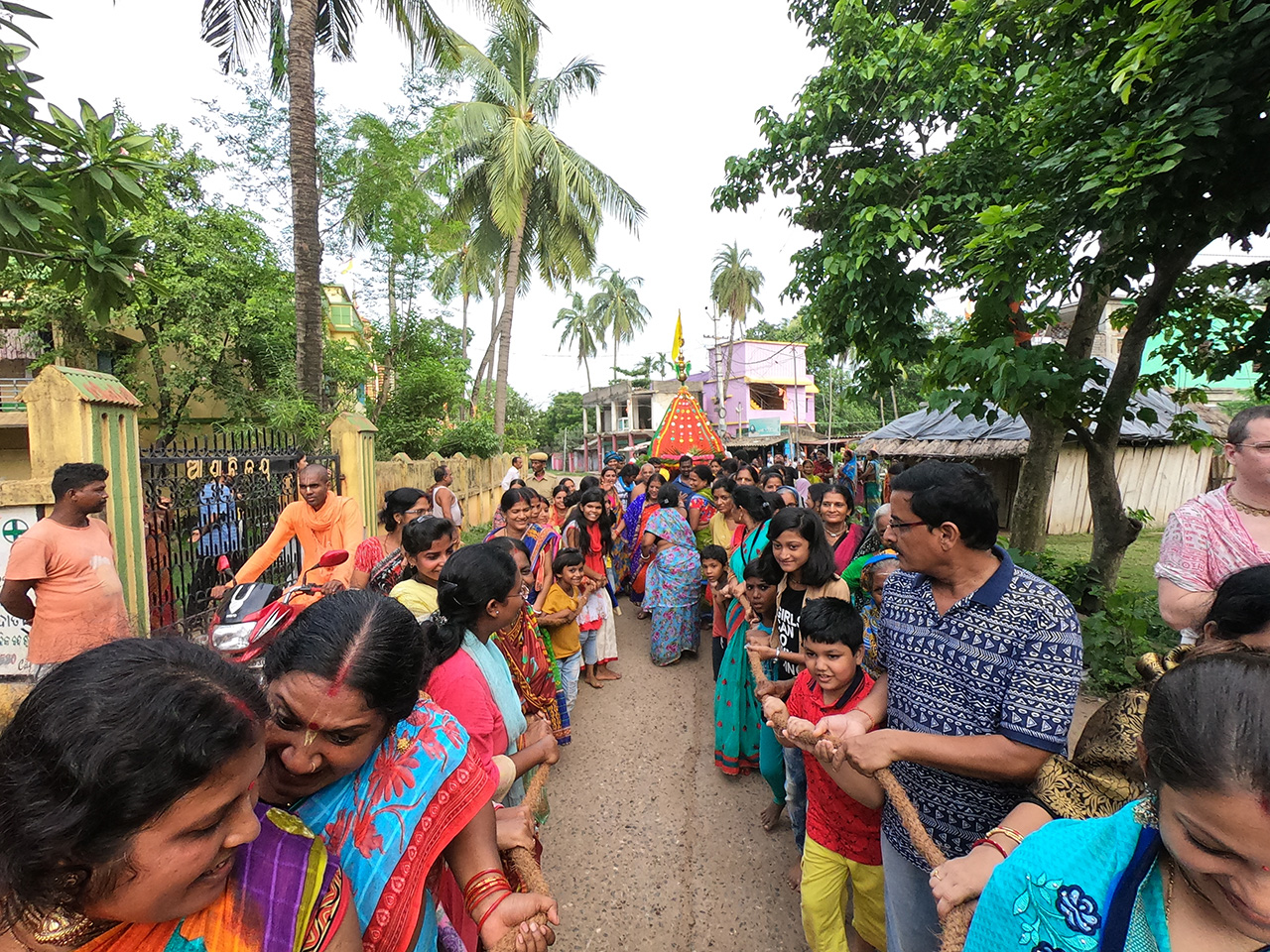
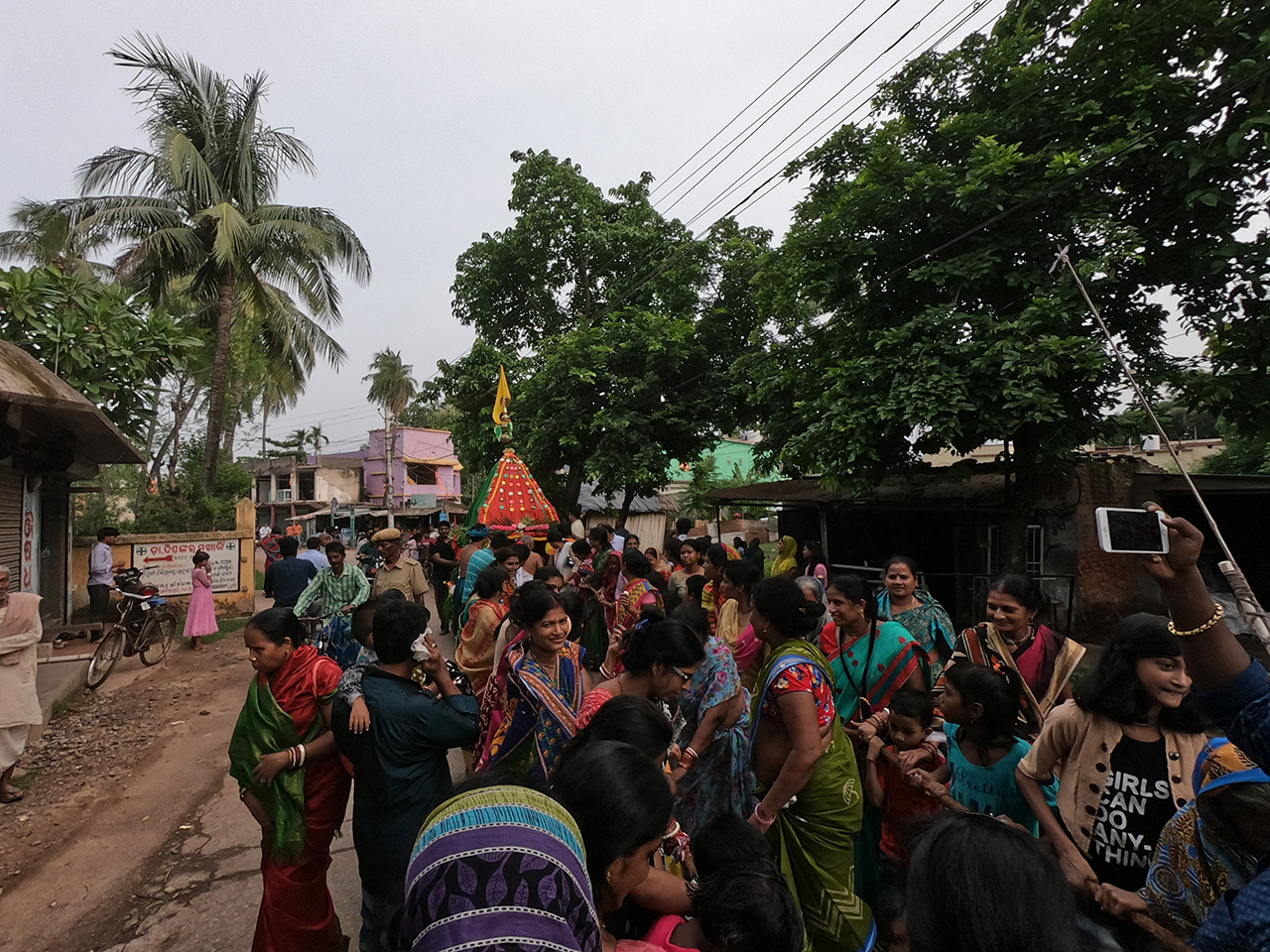
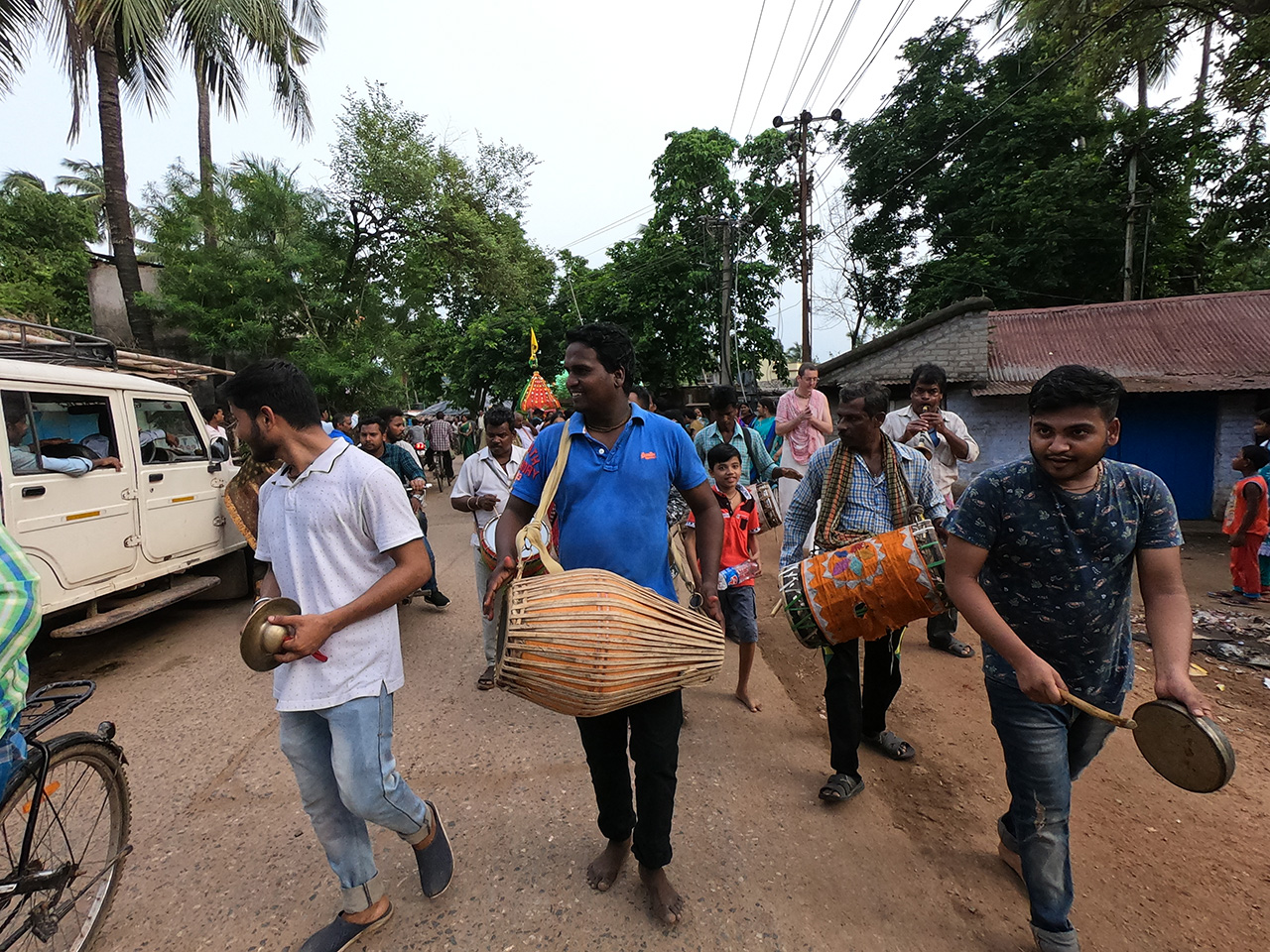
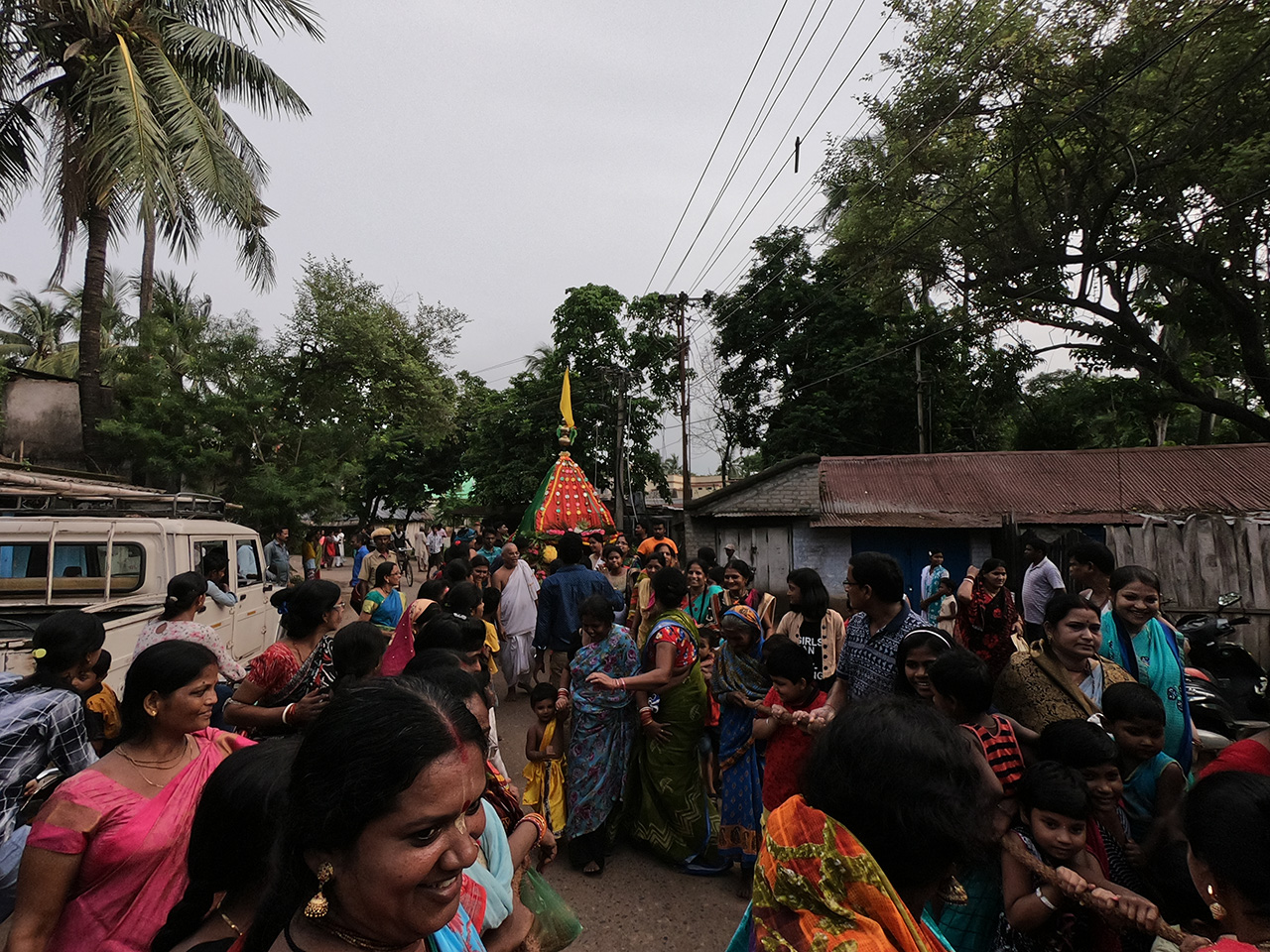
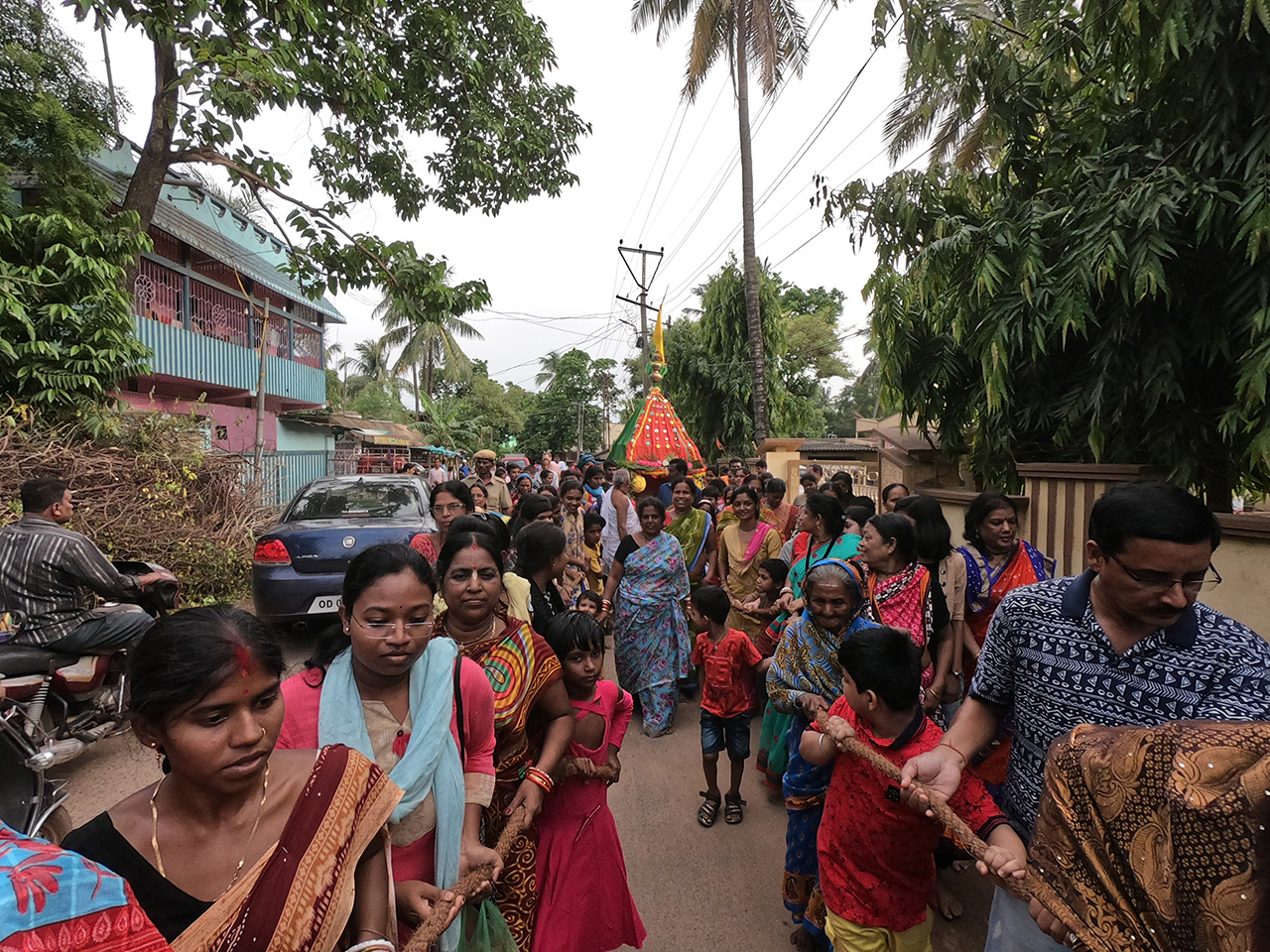
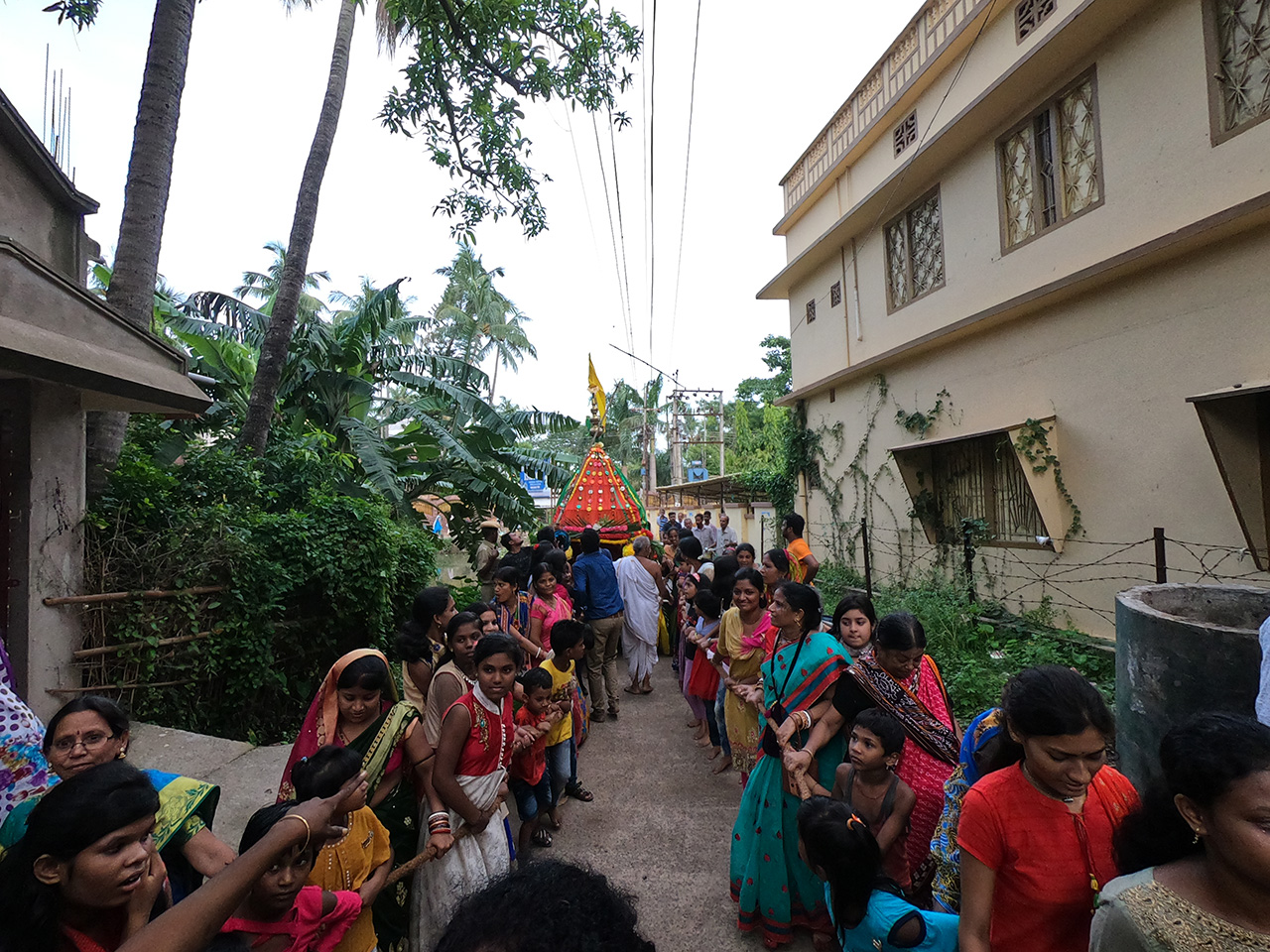
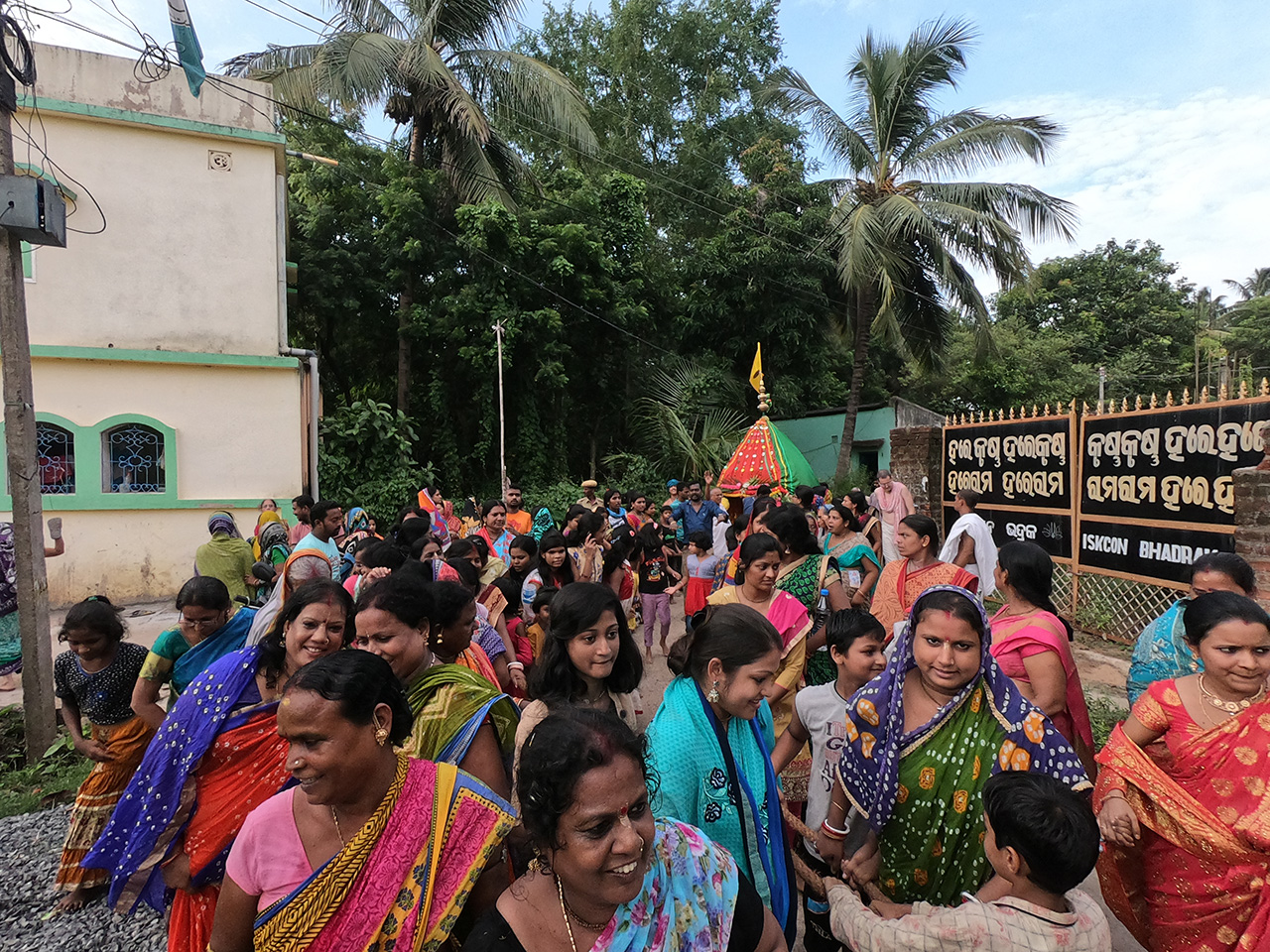
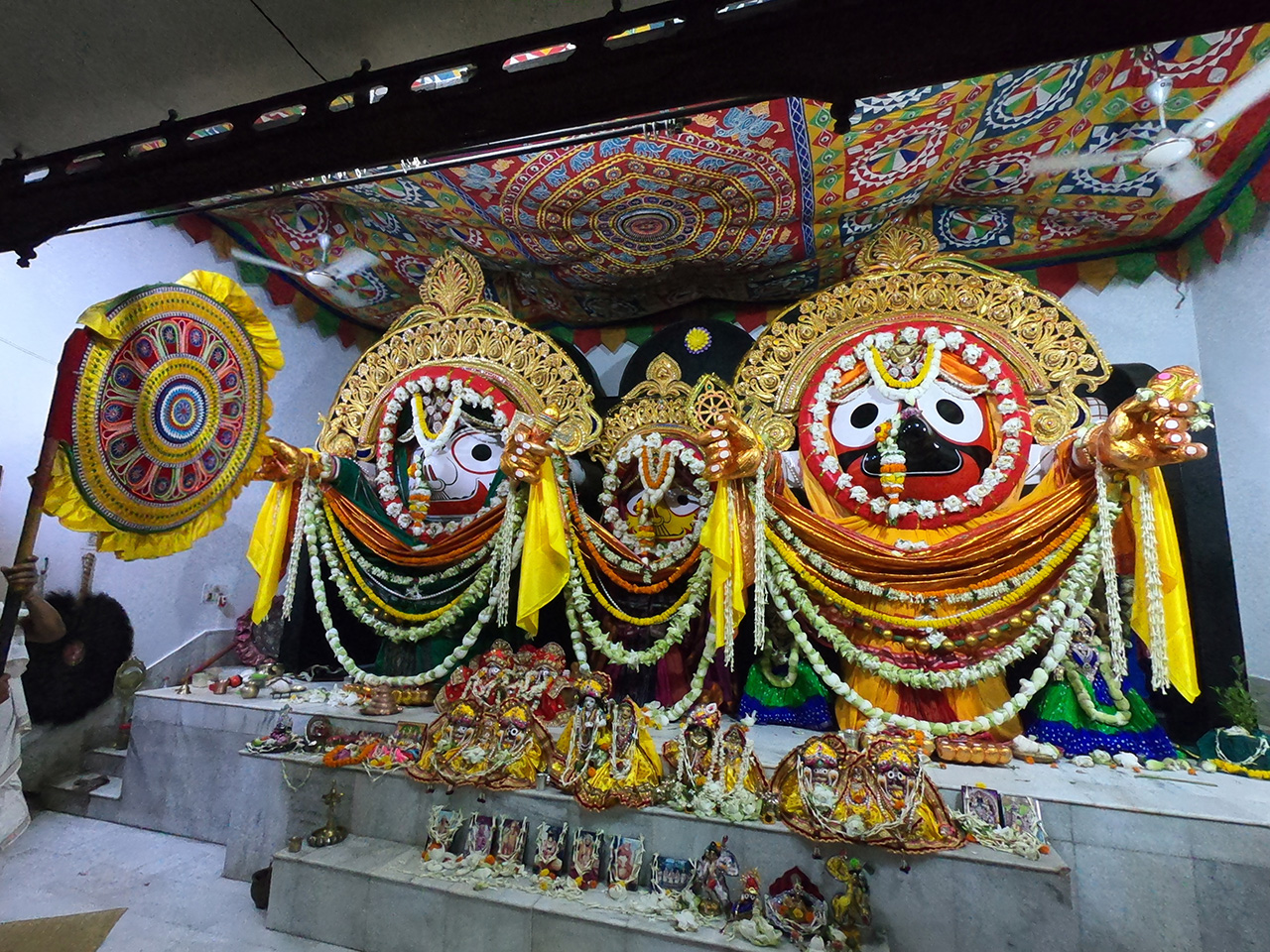
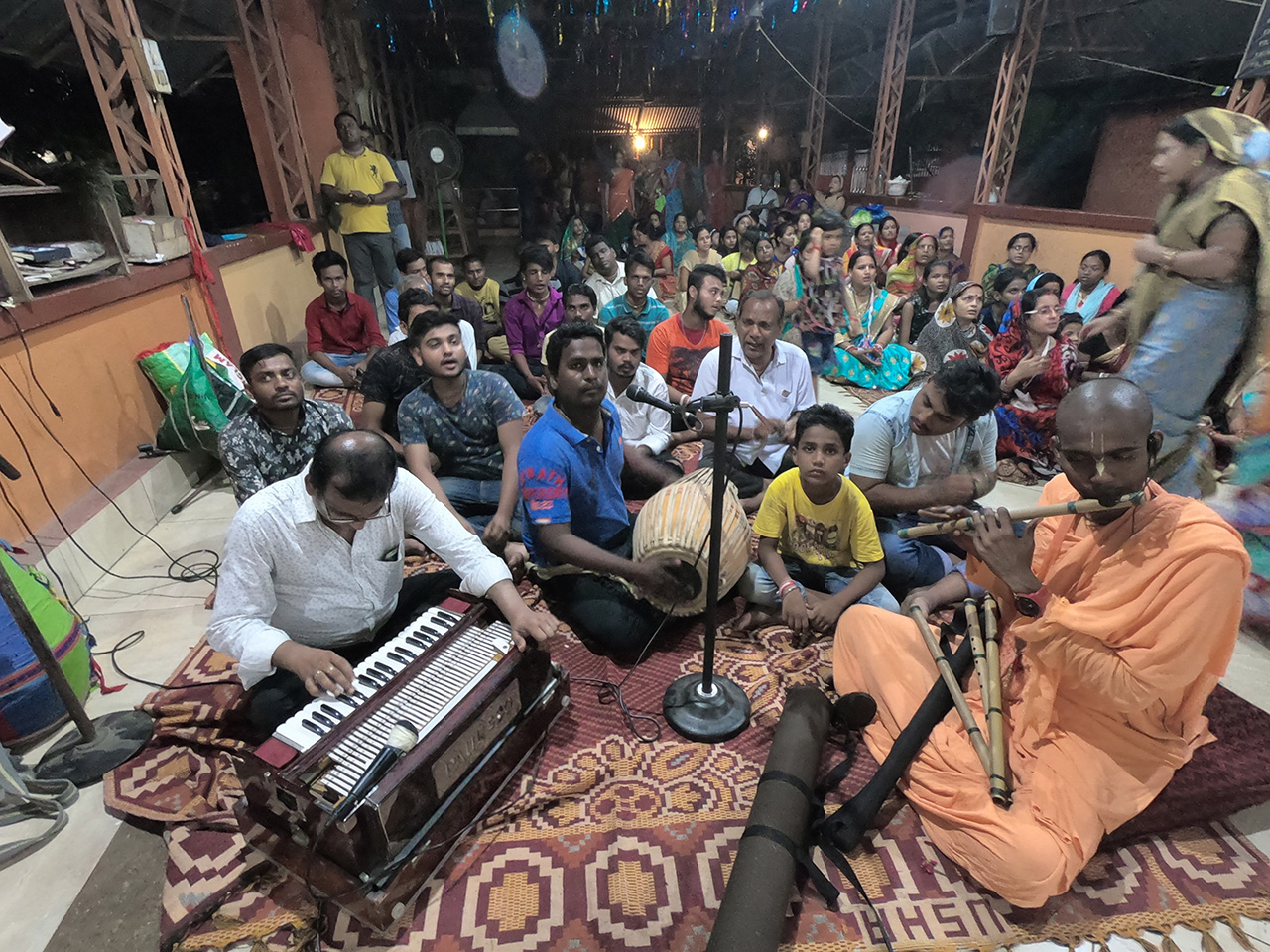




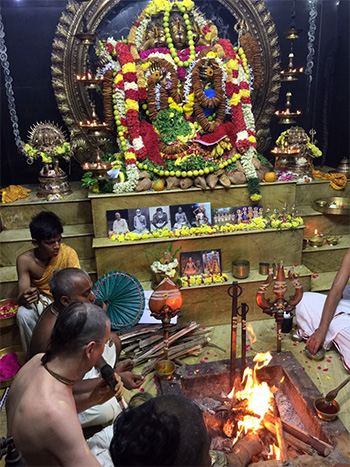
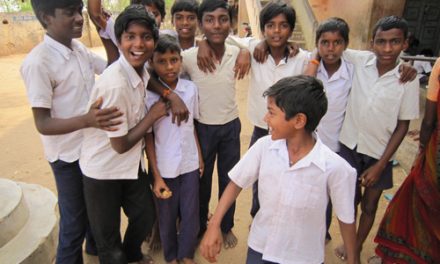

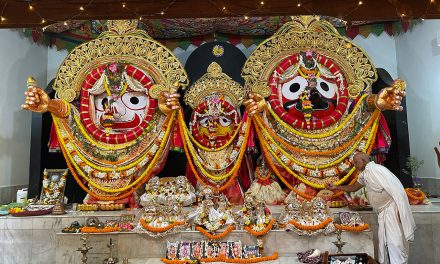
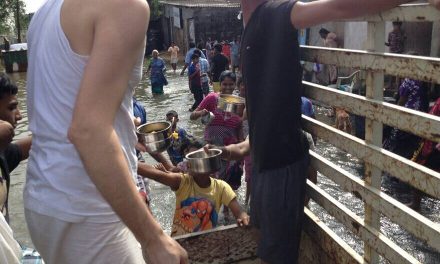
feeling very divine by reading the miracles of Lord Krishna
!!
Subadra
Haribol.Divinity through Daru Brahman.Very divine.
Haribol Haribol HariHaribol ! Jaibol Jaibol Jaijaibol JAGANNATHKI !
Very nice and i salute the devotion for Lord Krishna. I suggest the temple also does something about the low lying electric cables in the town, they sound dangerous. Lord Krishna always made sure the citizens in his kingdom were safe. Let us use Western technology in a safe way. Jai RadheKrishna.
very nice plconduct every year by god’s grace thishas to continue
Wonderful Sir, well explained. Looking forward to your next article on the miracles mentioned by you. Haribol. Jai Jagannathji ki.
Hari Bol! Prabhu heartfelt appreciation and gratefulness for descrbing the whole event – the video is heartwarming as well – the joy / simplicity of the Devotees is a refreshing sight. Please also mention the miracles dont worry about those who tend to disbelieve, our duty is to narrate our experience and leave the rest to Lord Sri Krishna! Please feel free to mail me at sanatattavar@yahoo.com i’d love to hear the events that unfolded. Hare Krishna!
Thank you for sharing this story! I love how Sri Jagannatha manifests and blesses us with His smiling face. I would love to hear more miraculous stories. My Deities were made in Ekachakra and I feel blessing from Nityananda Prabhu, especially living in the USA. For someone who did not grow up knowing anything about Sanatana Dharma, it’s causeless mercy to even know about Them!